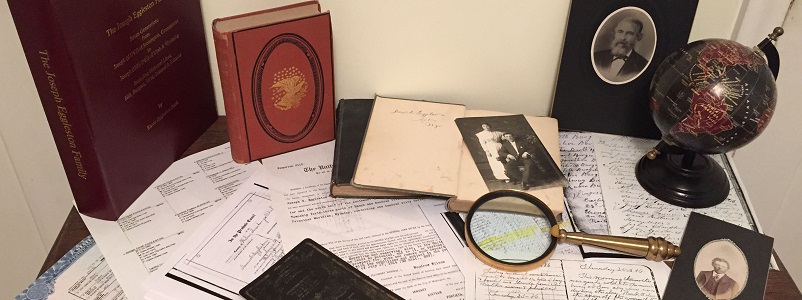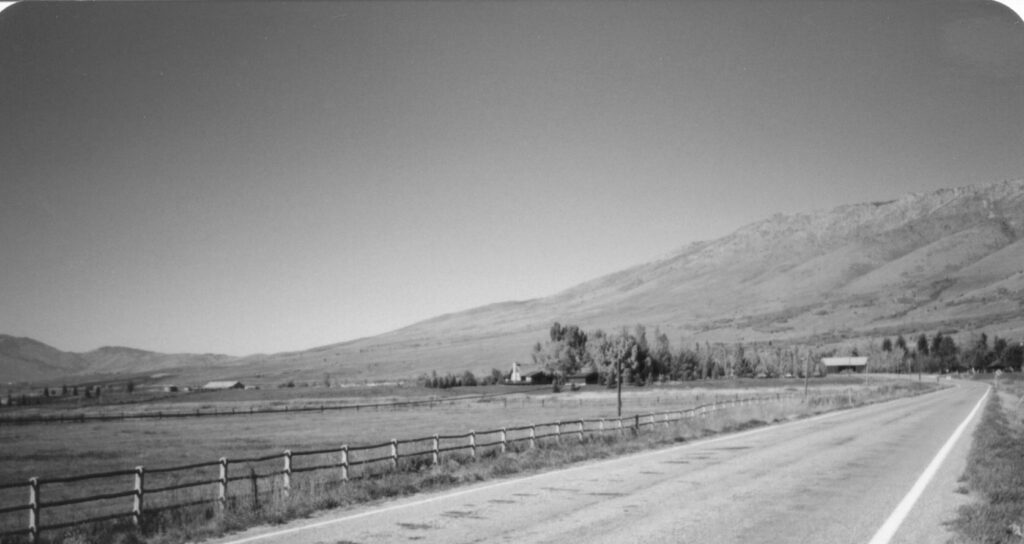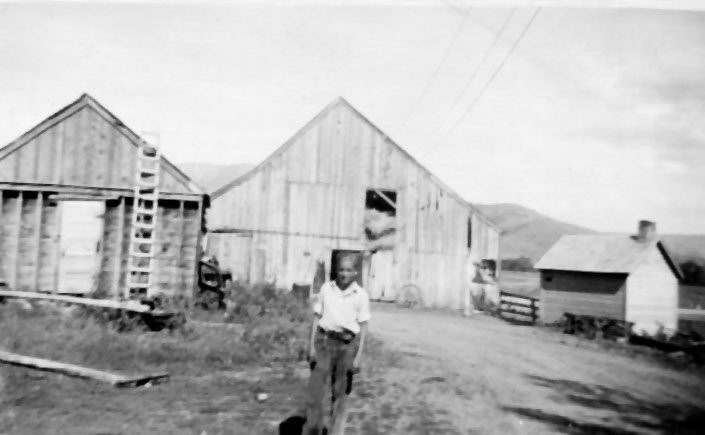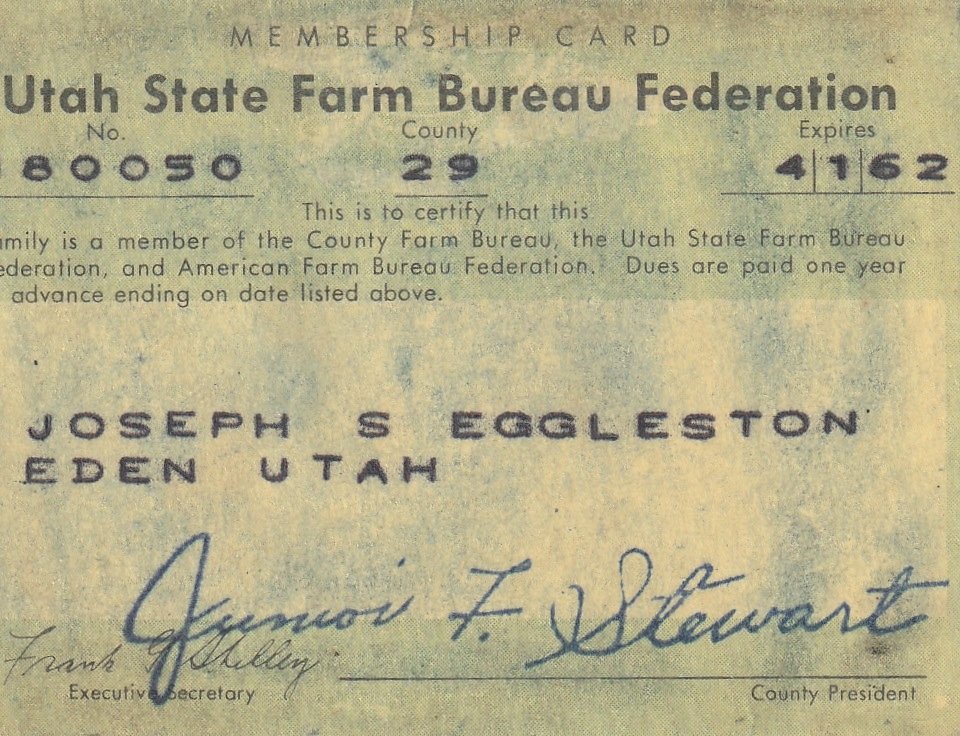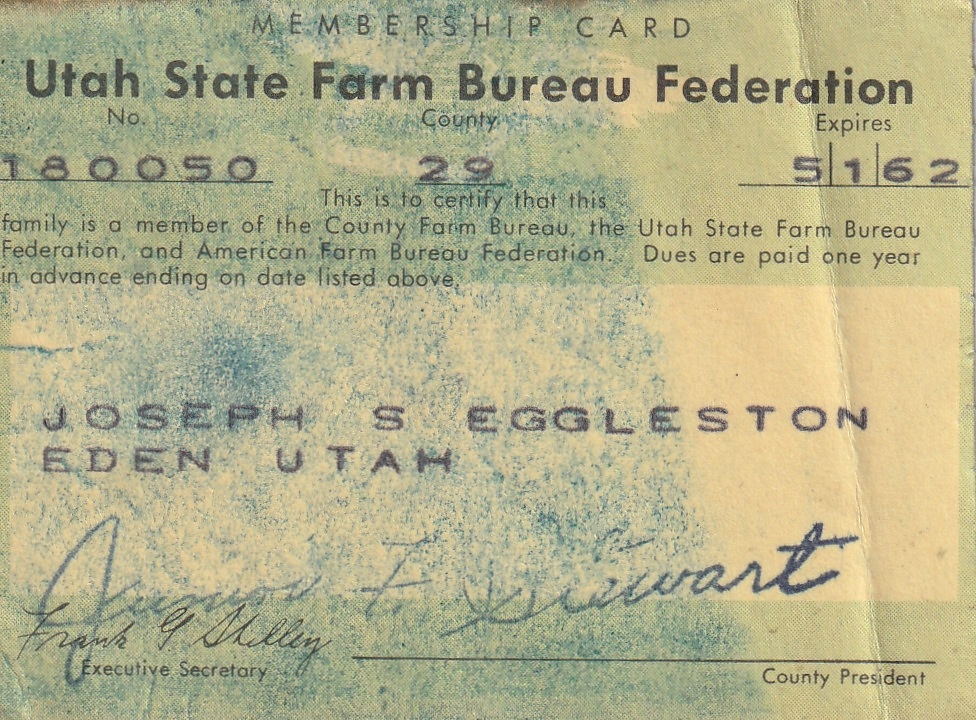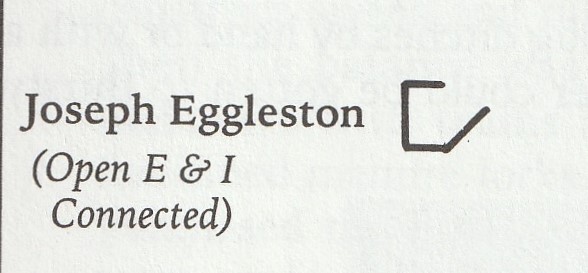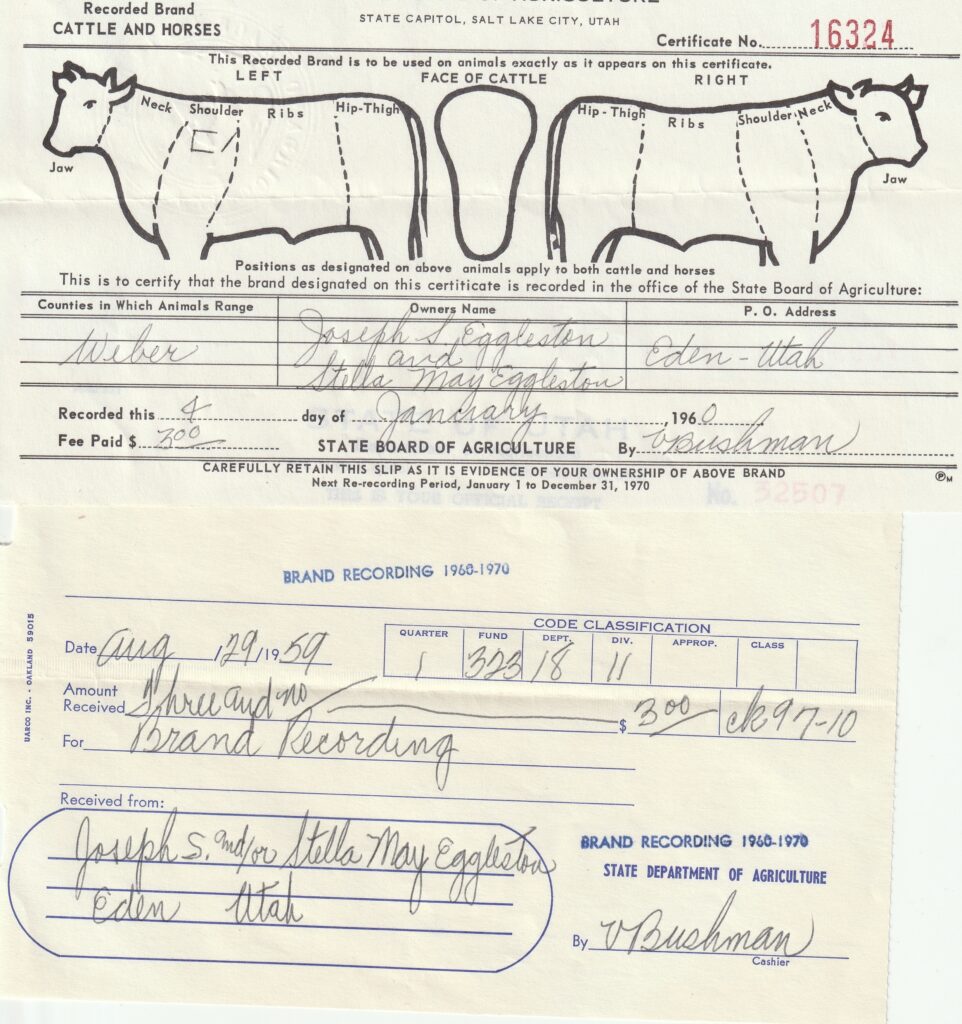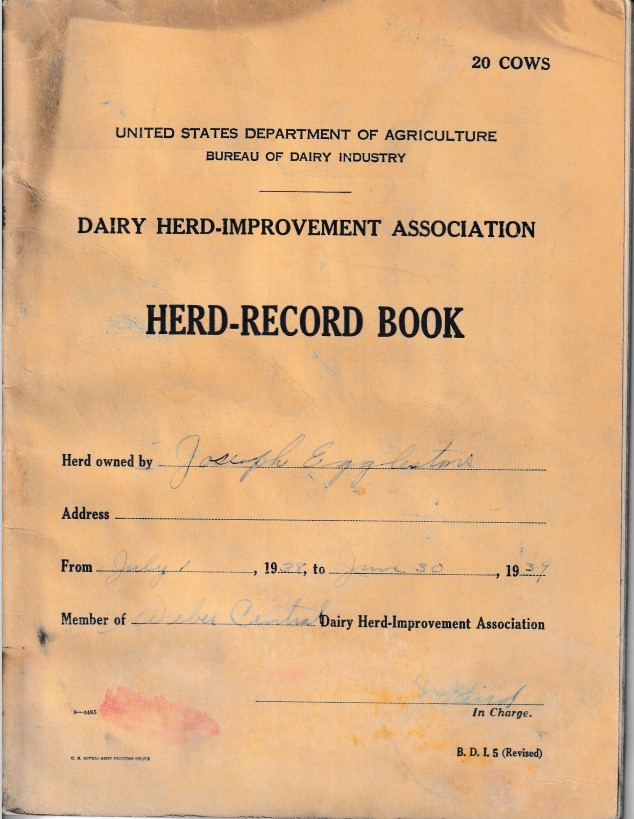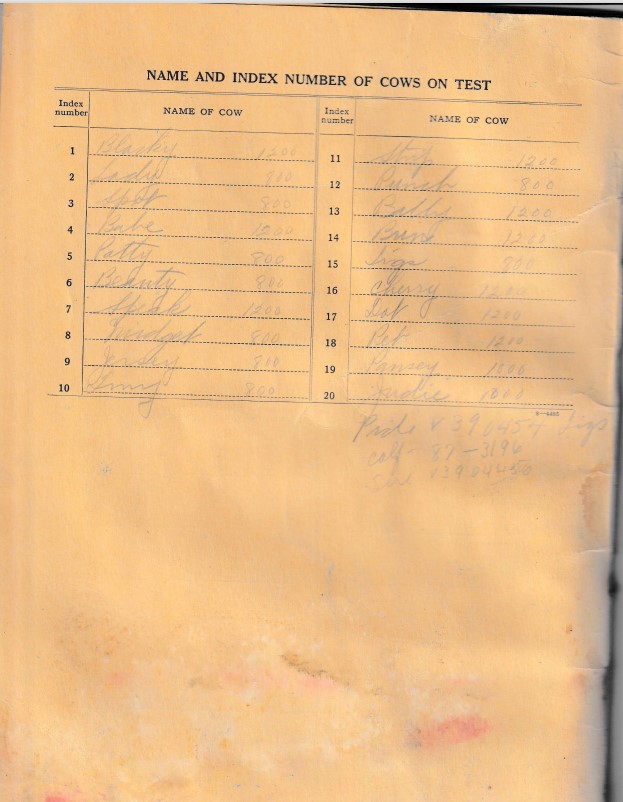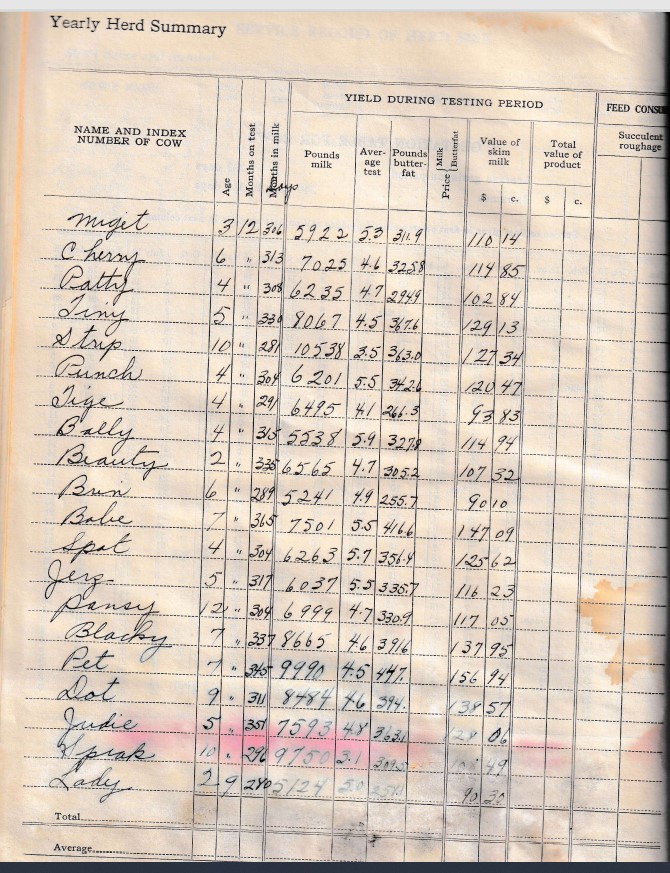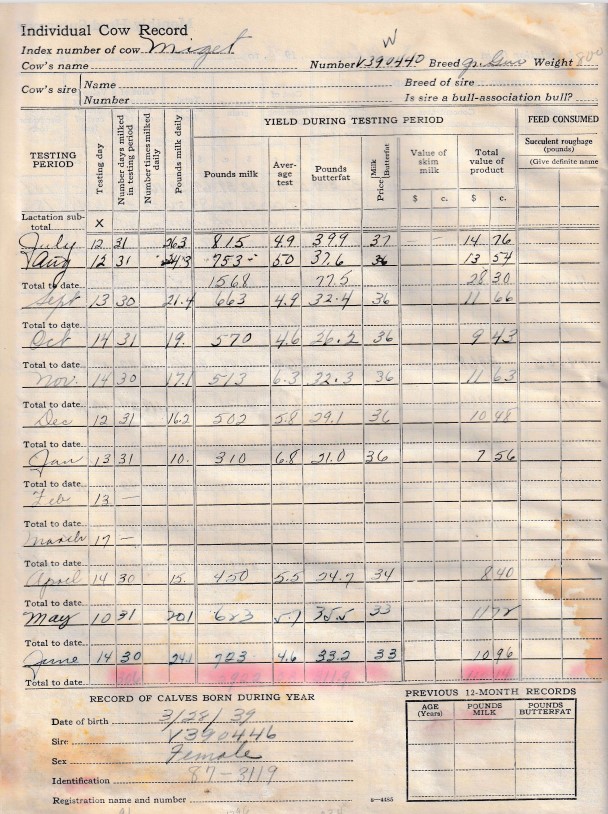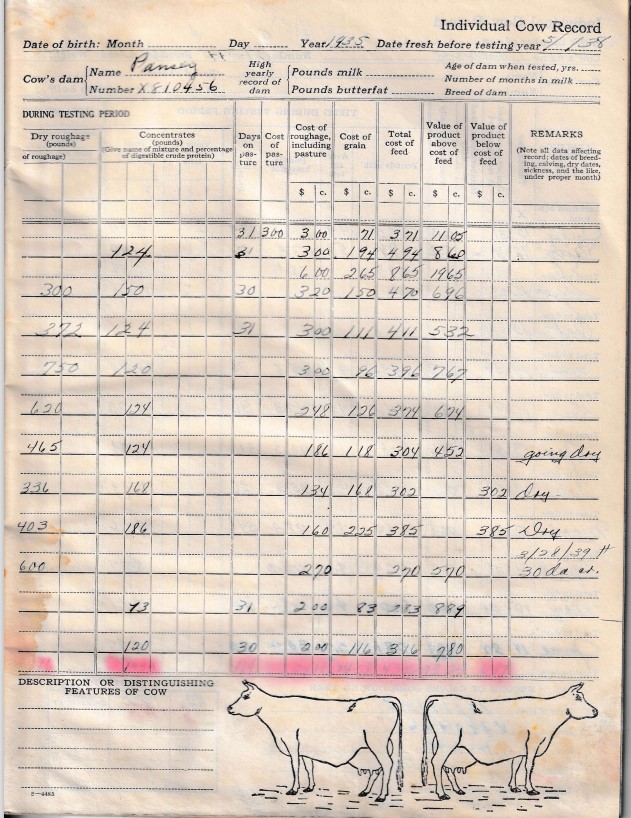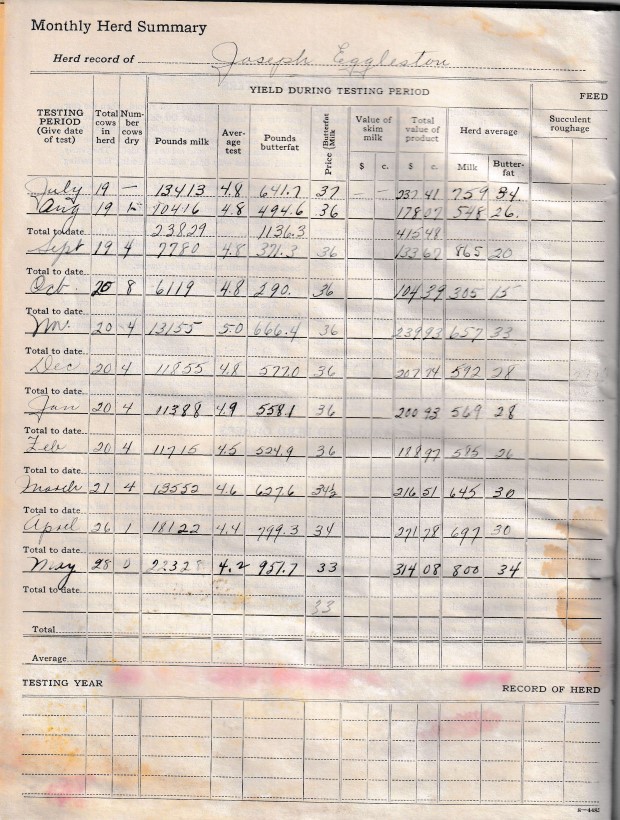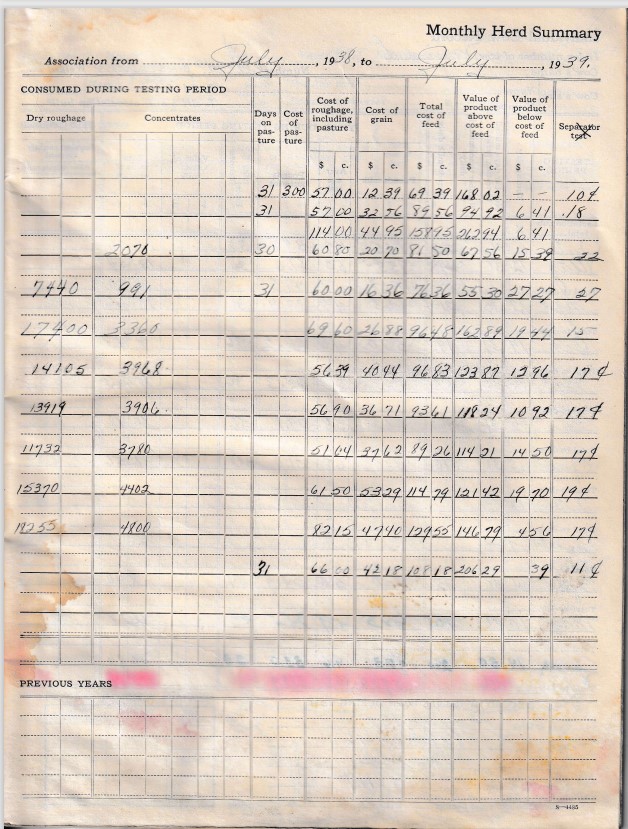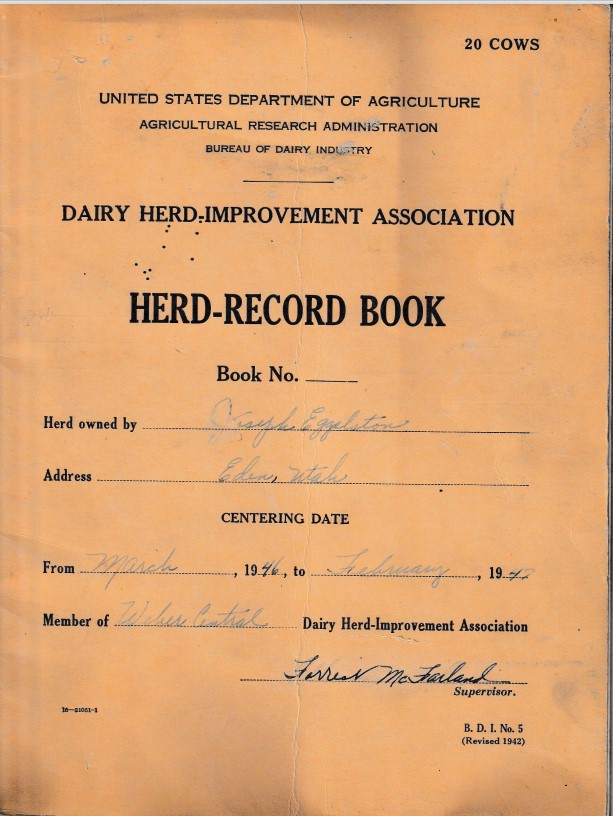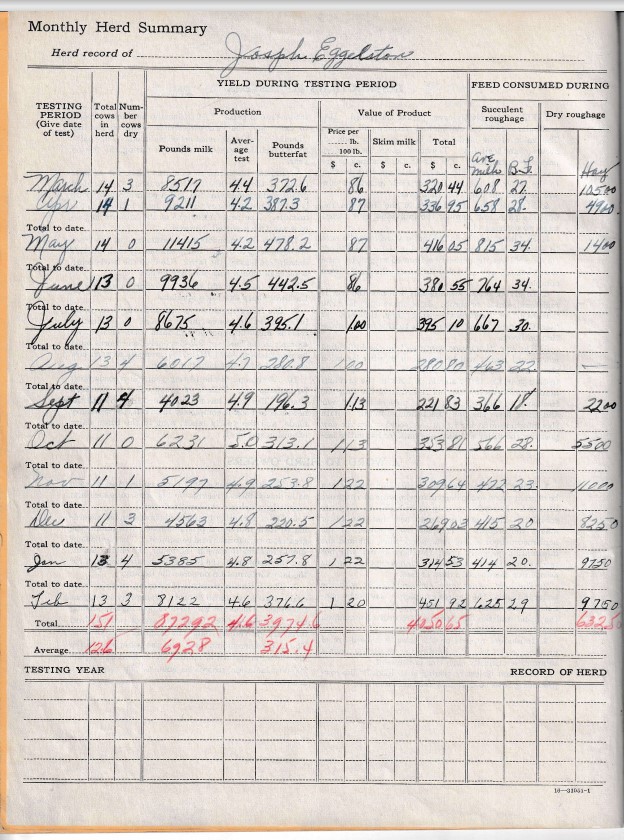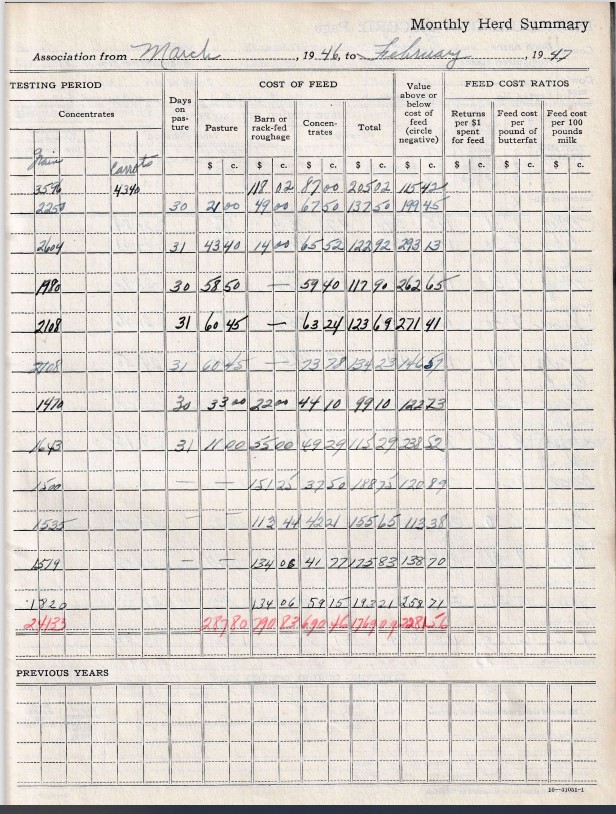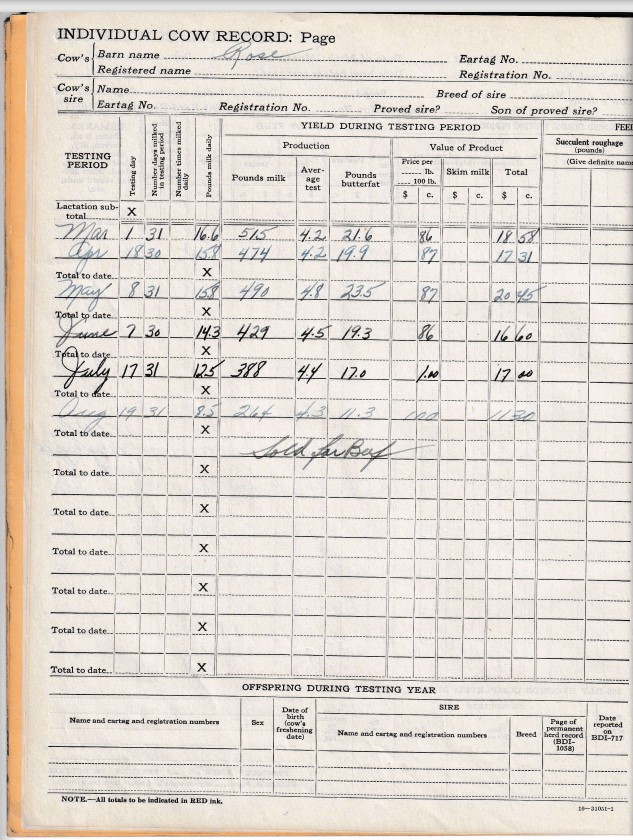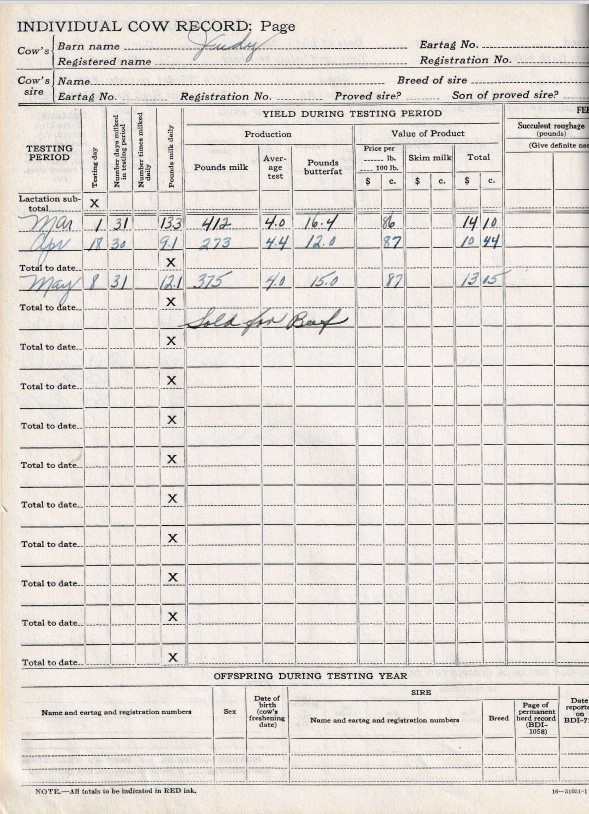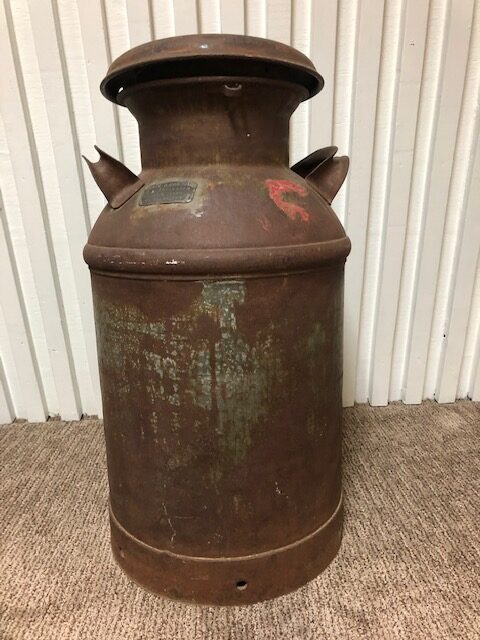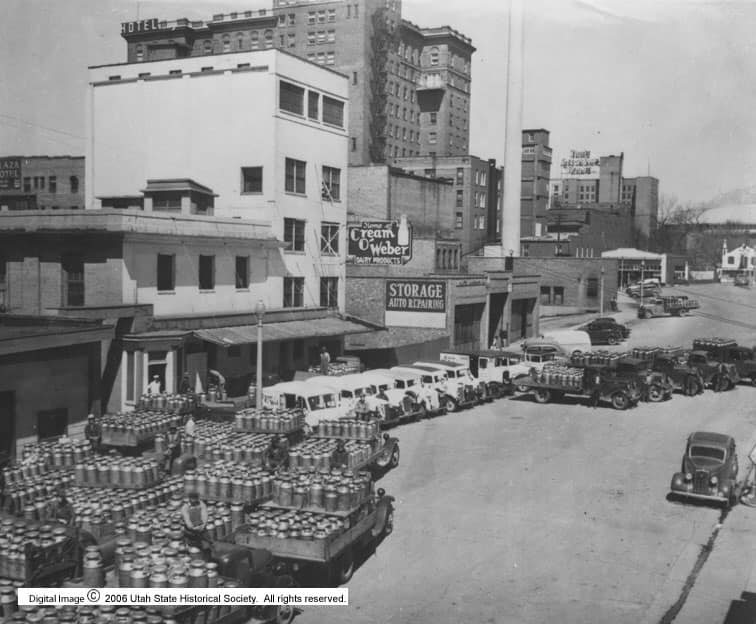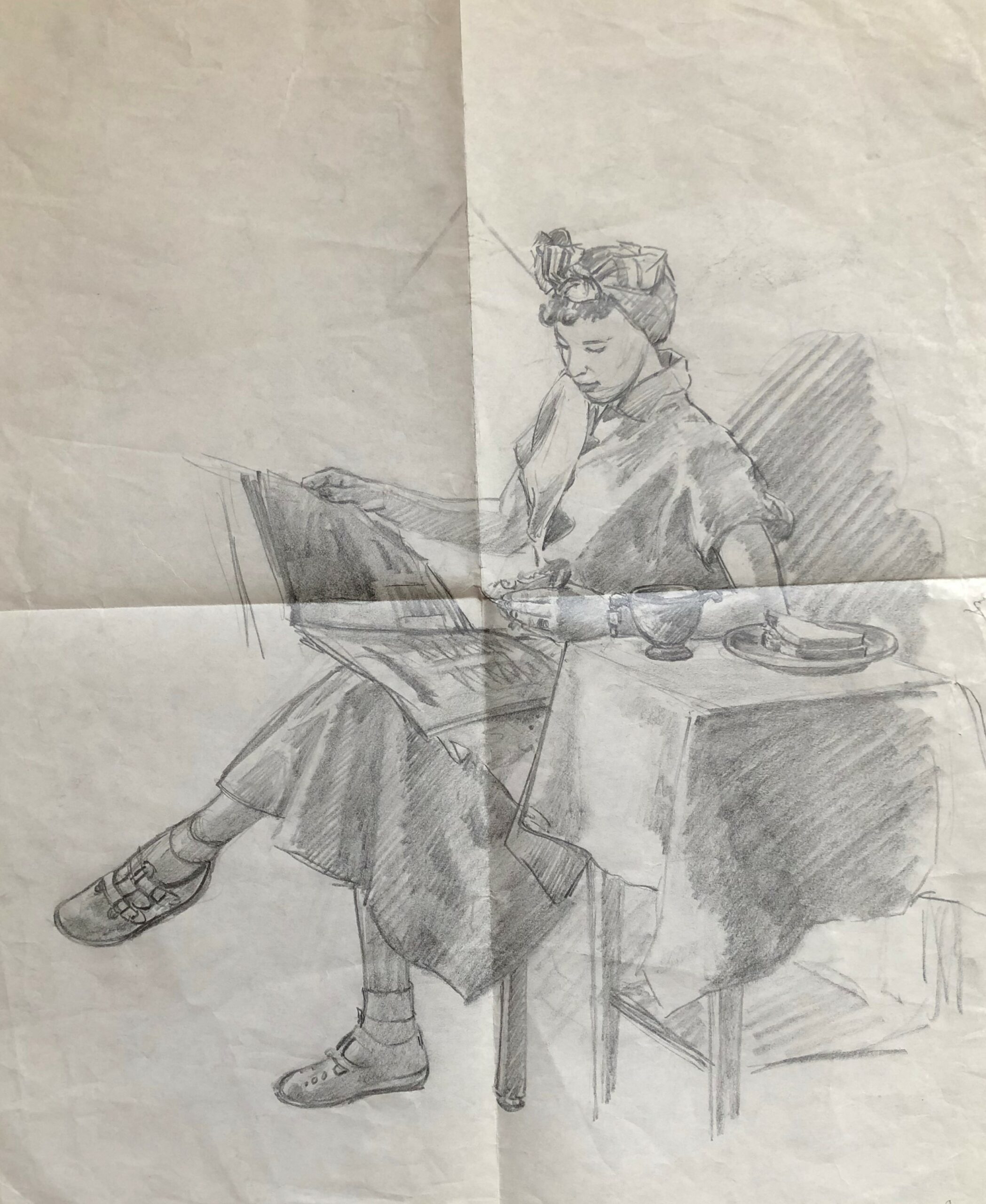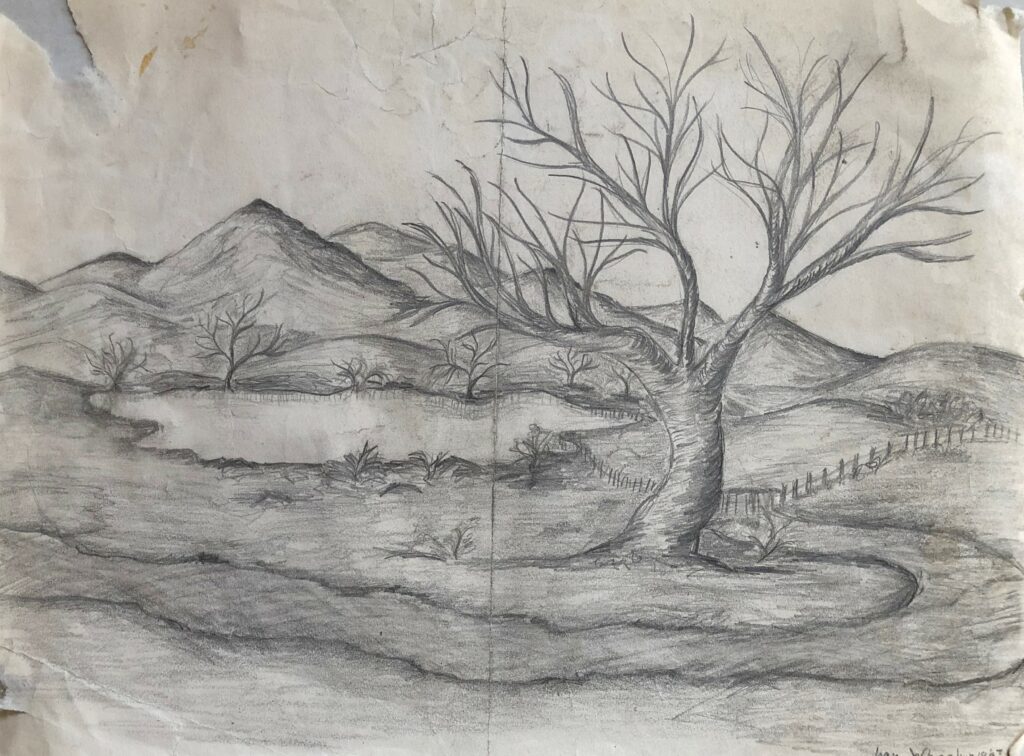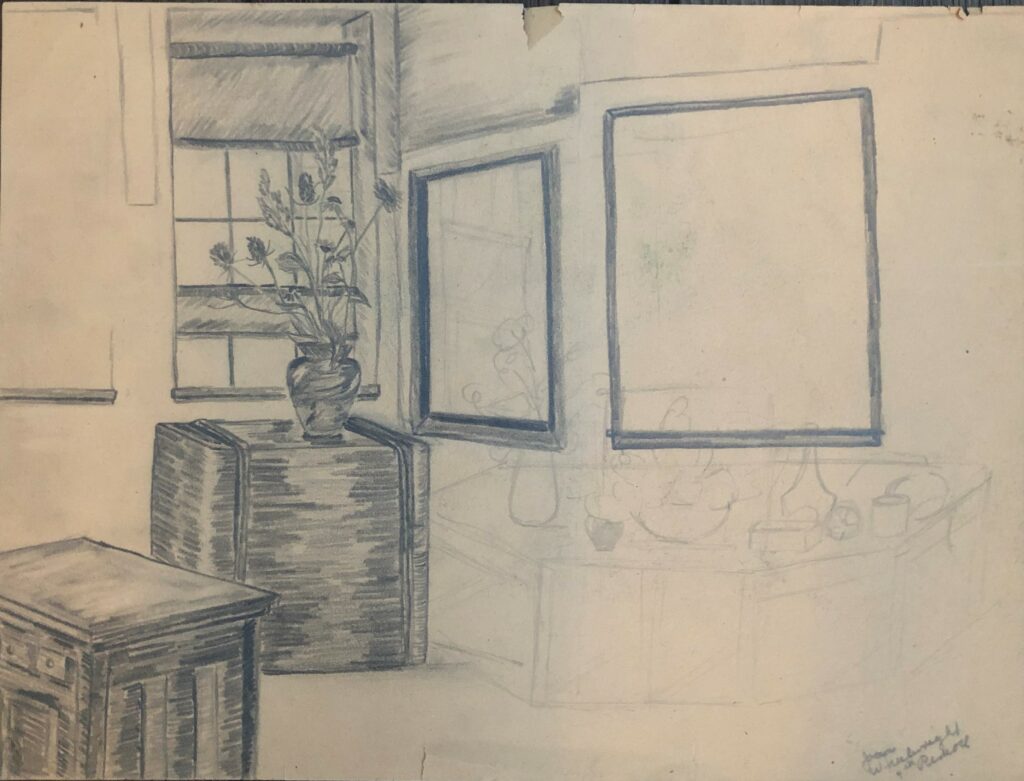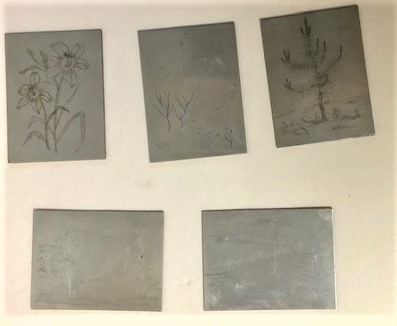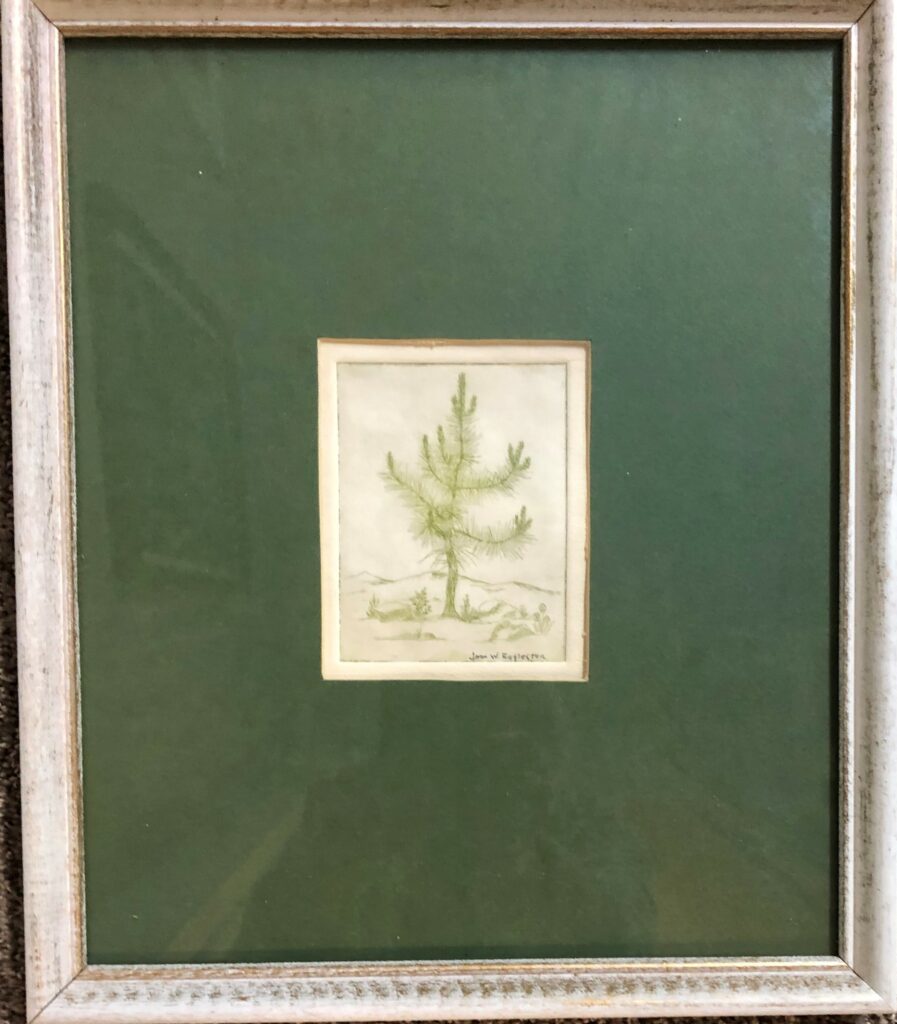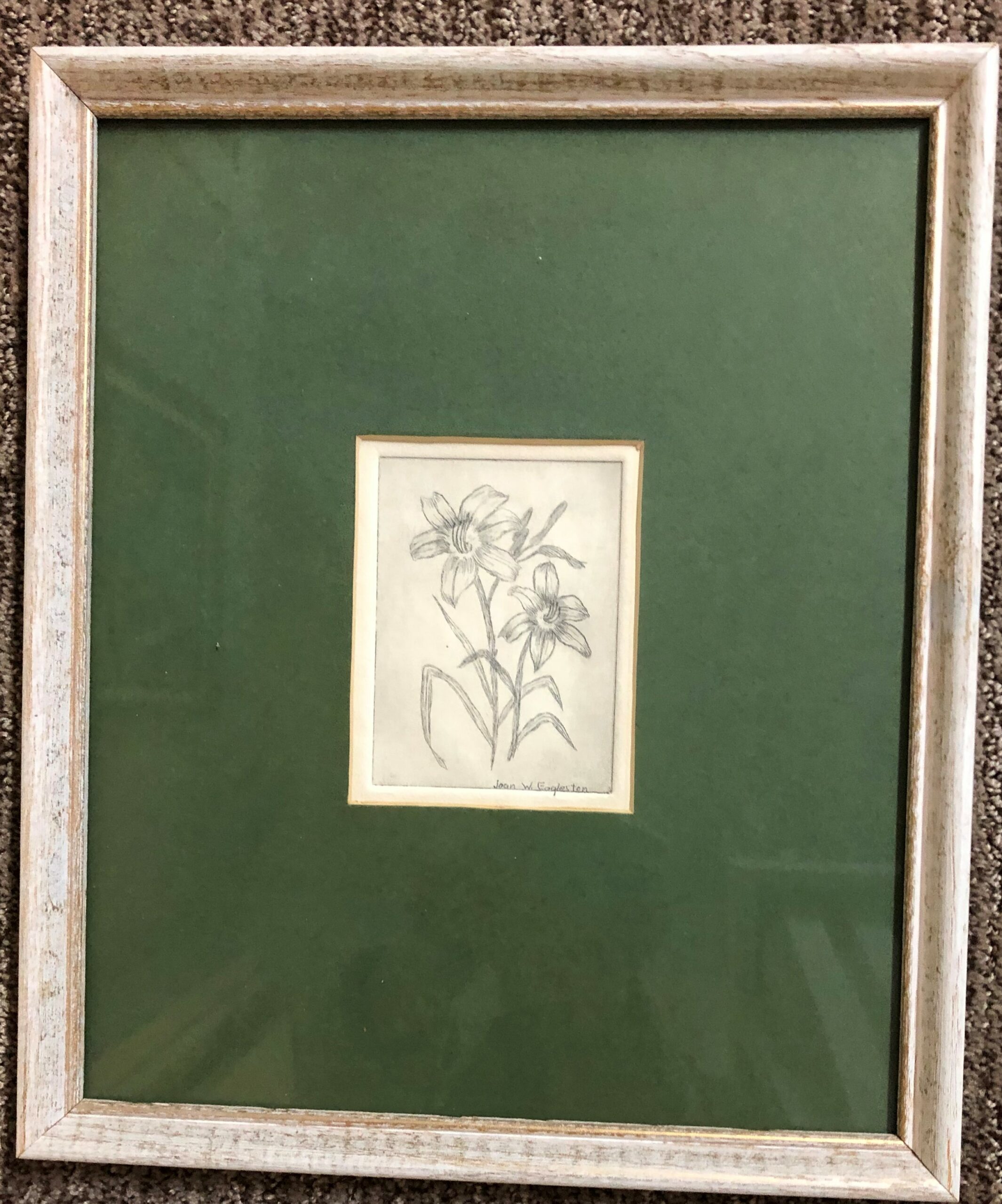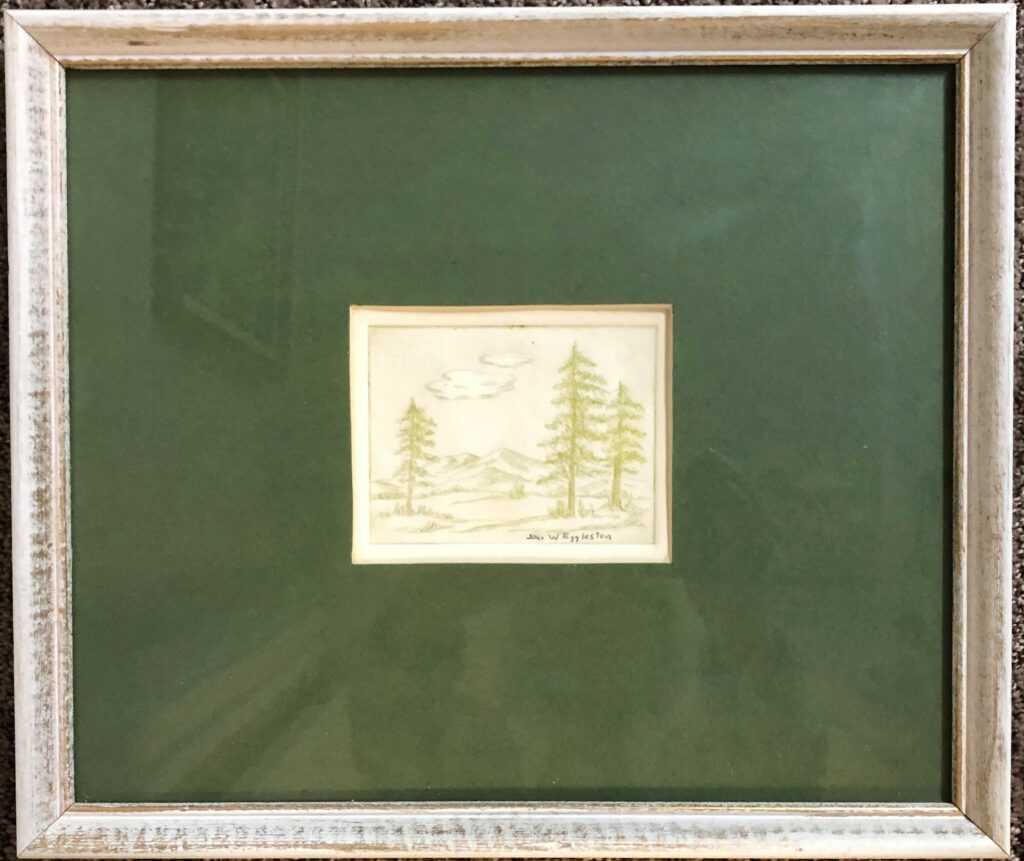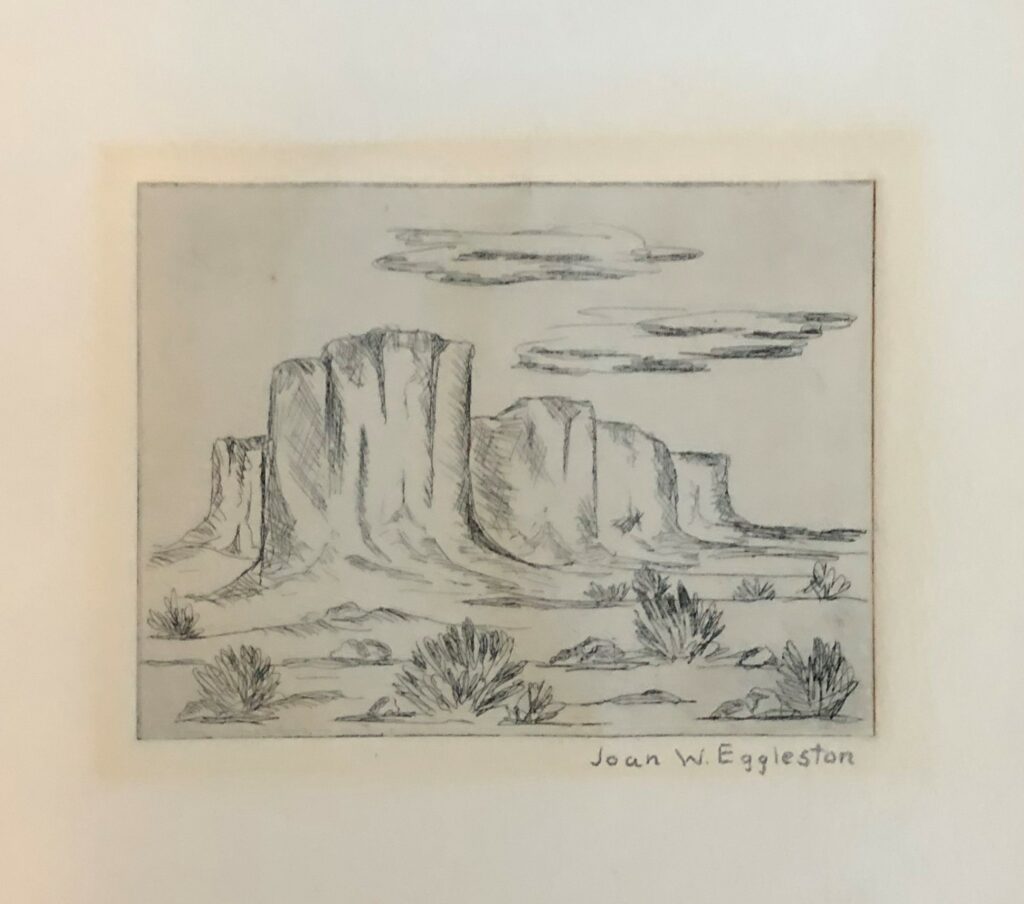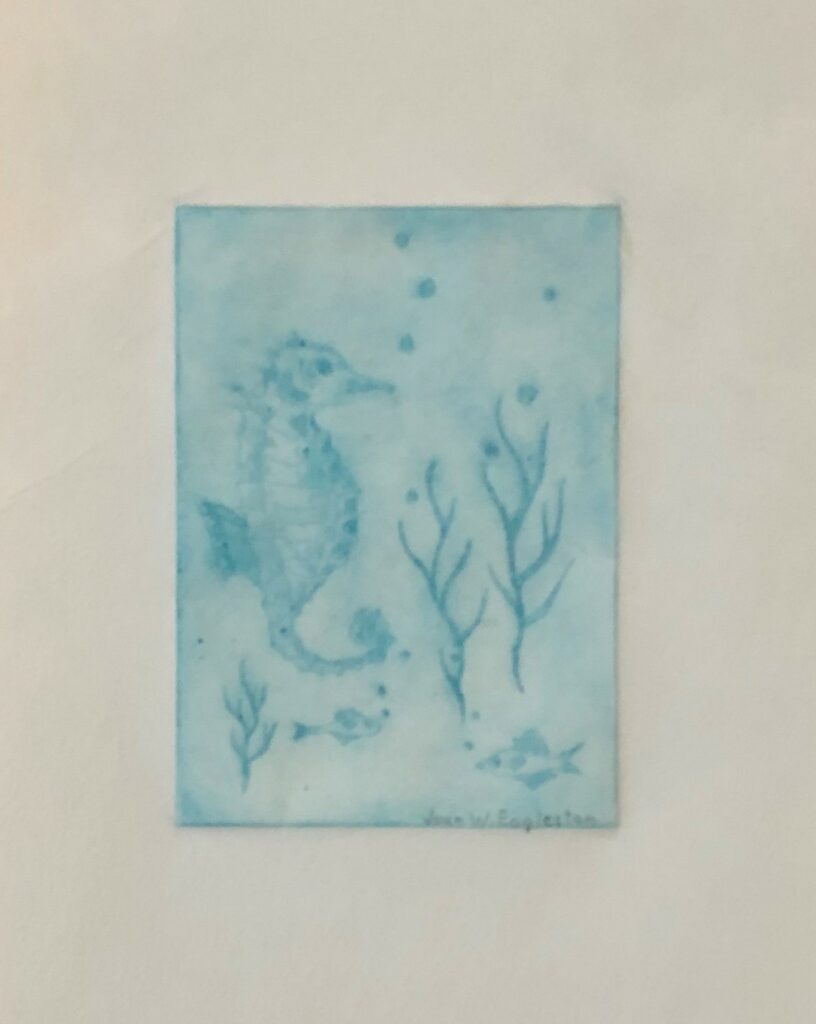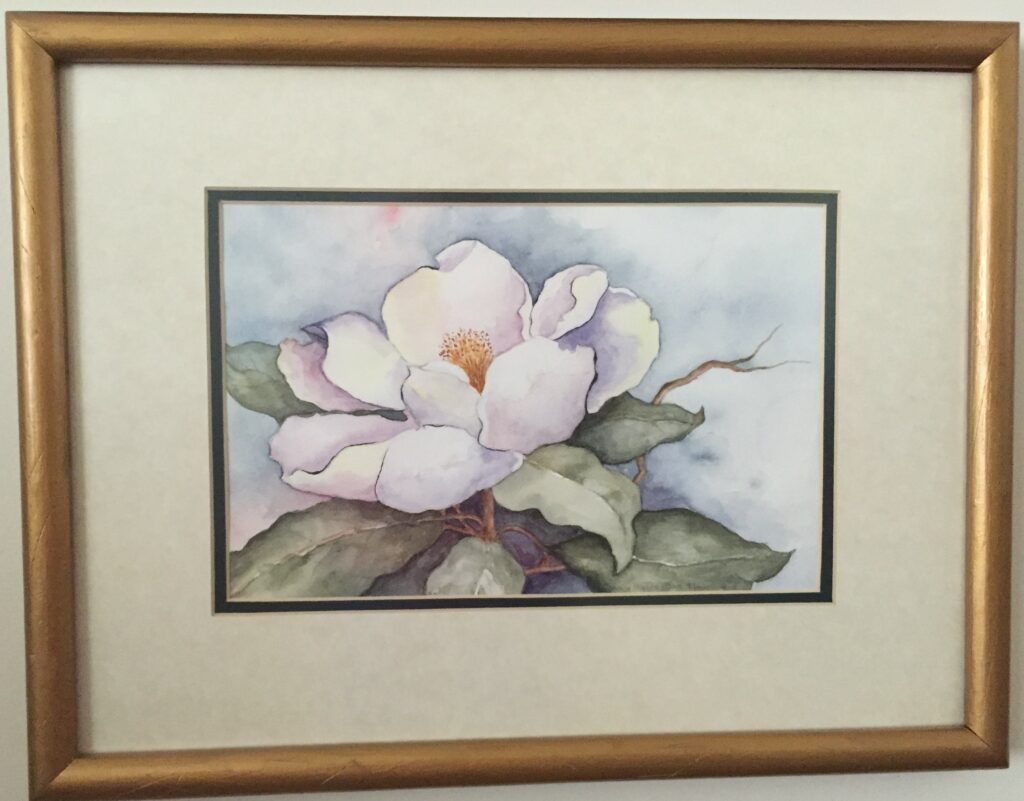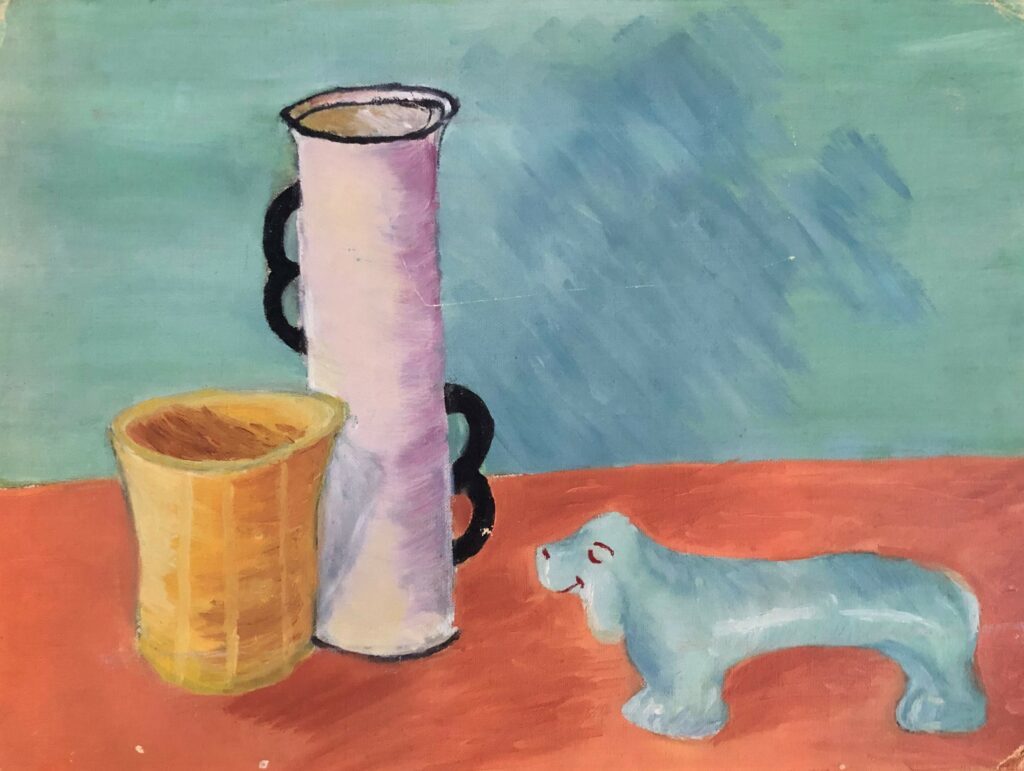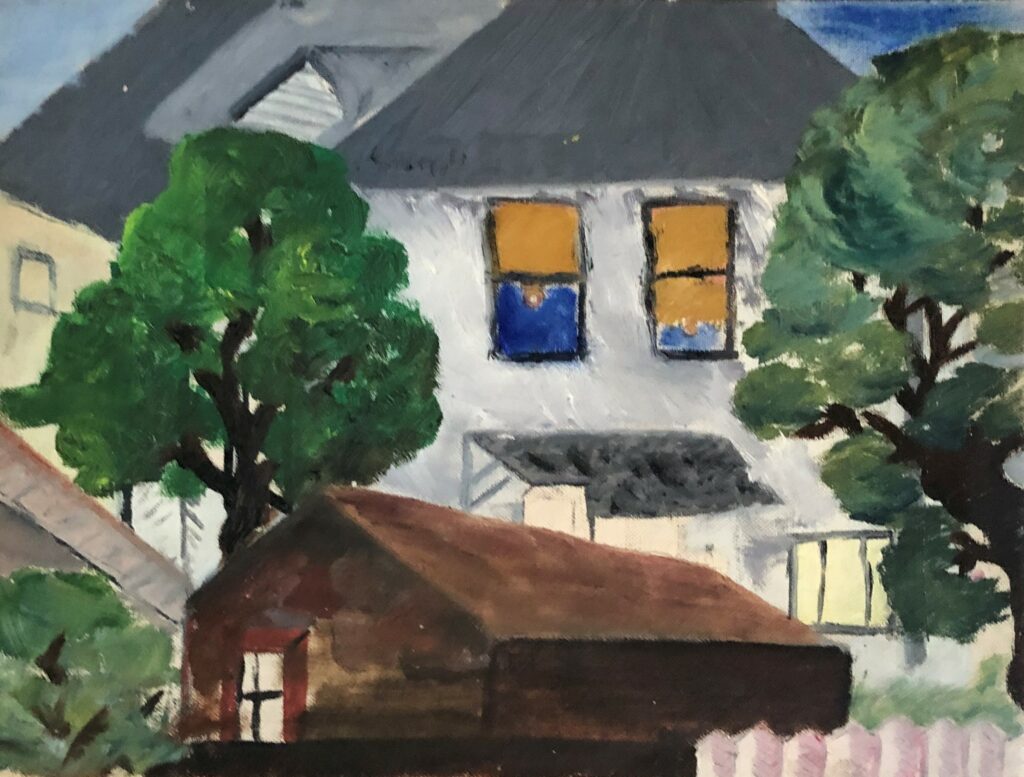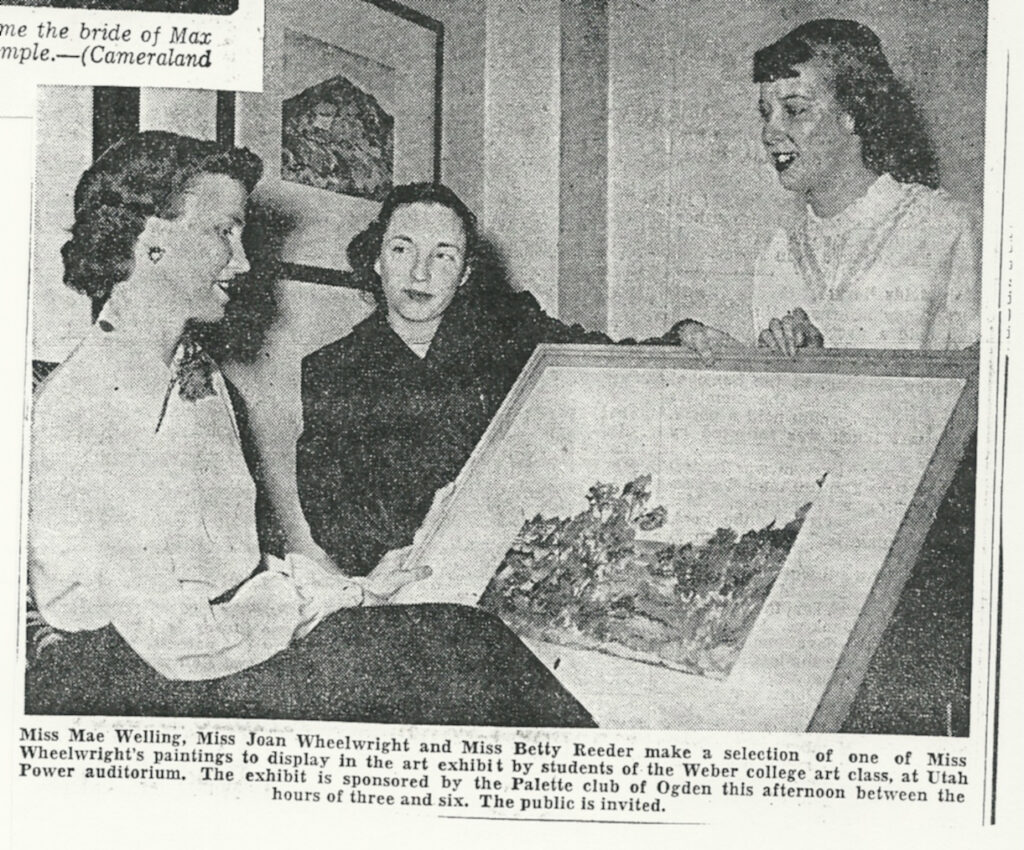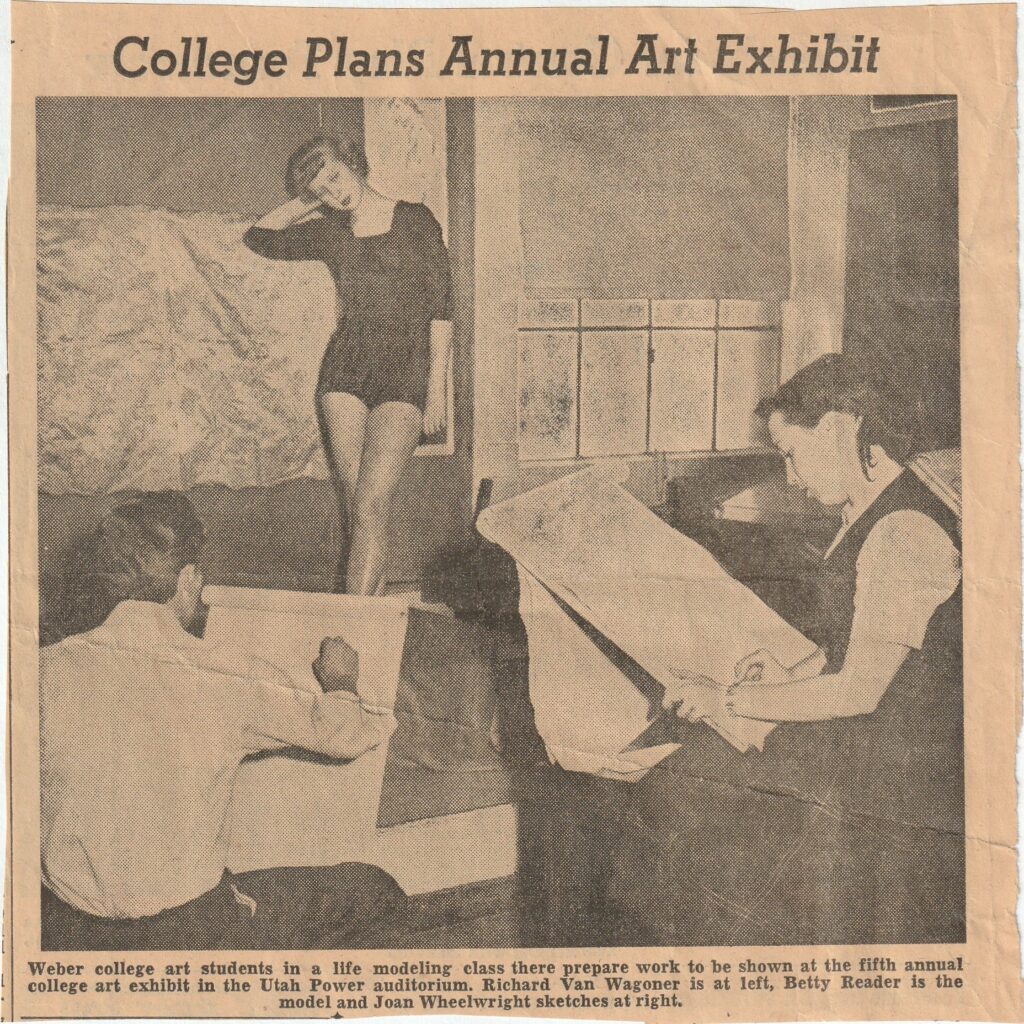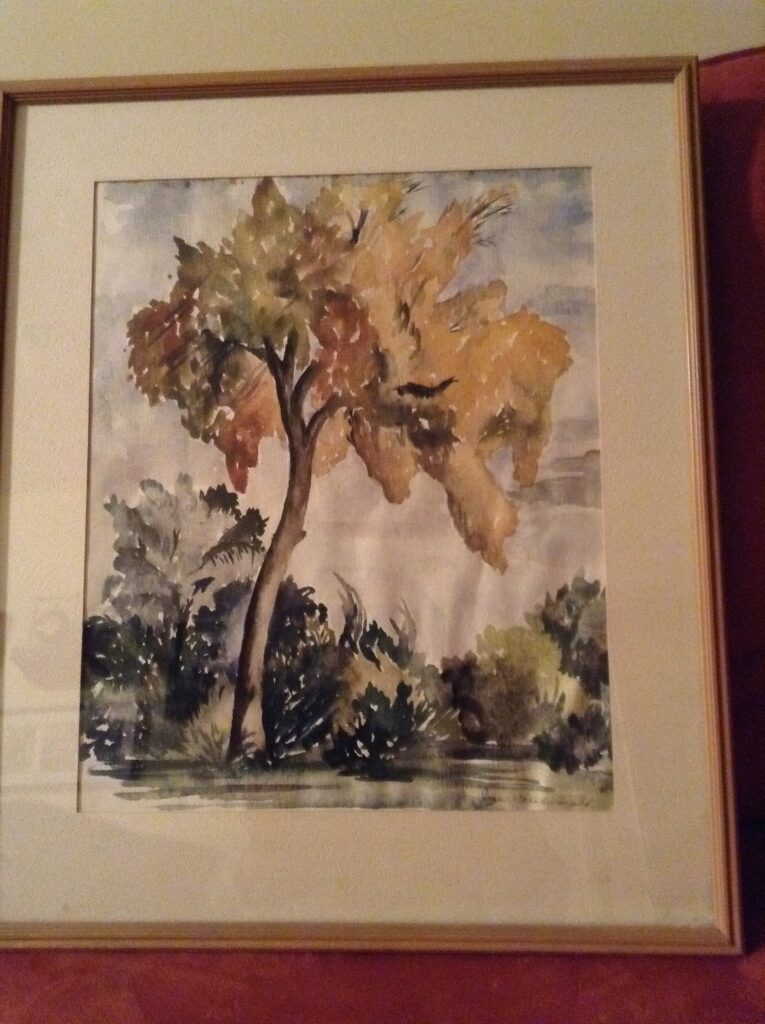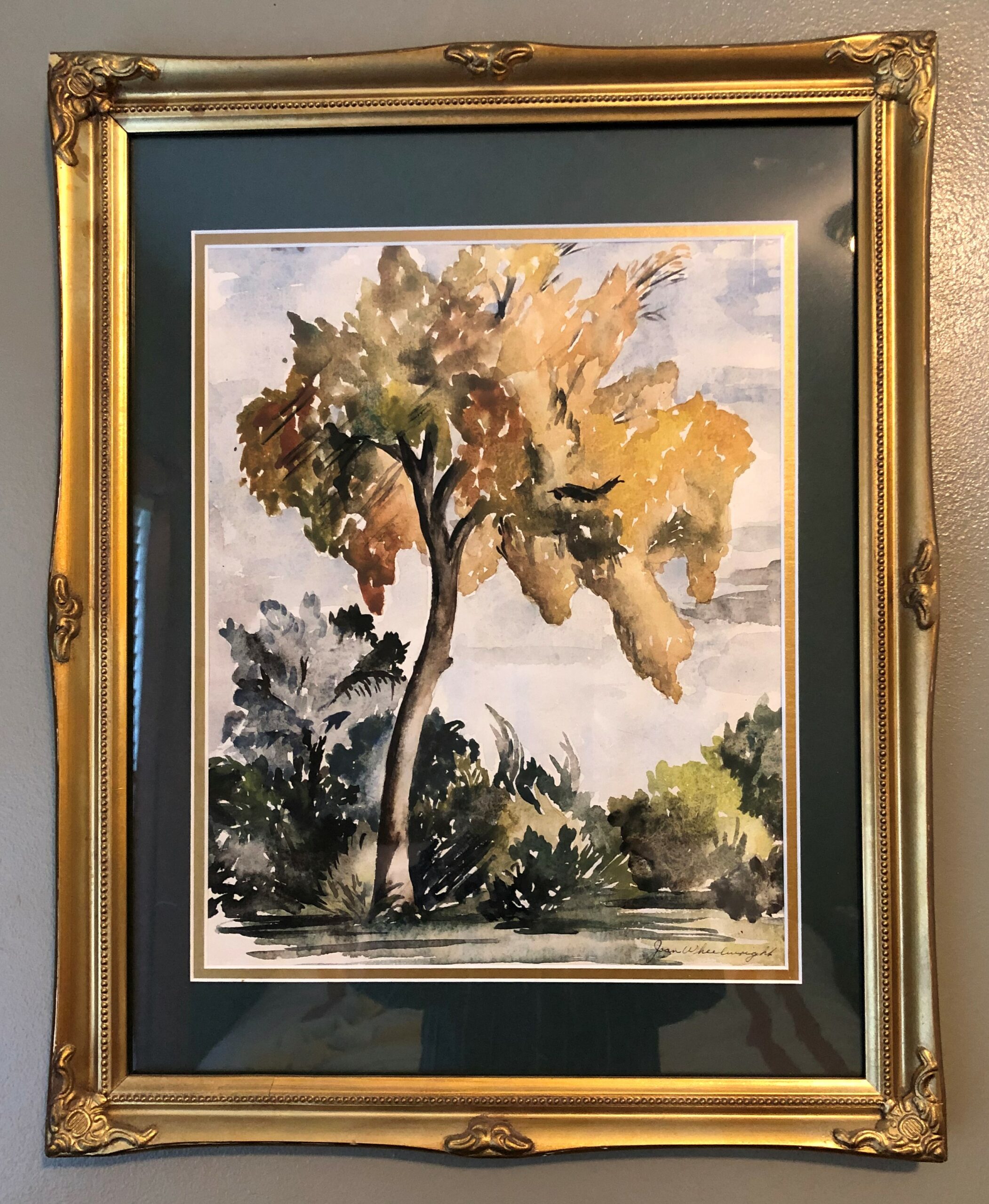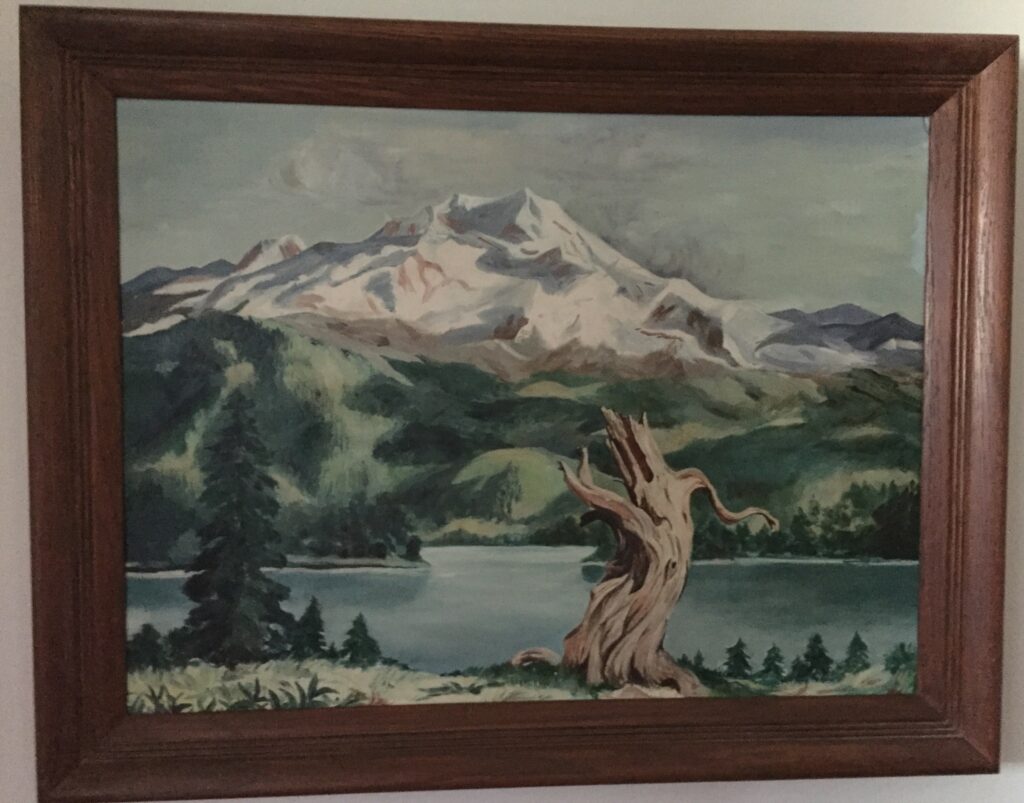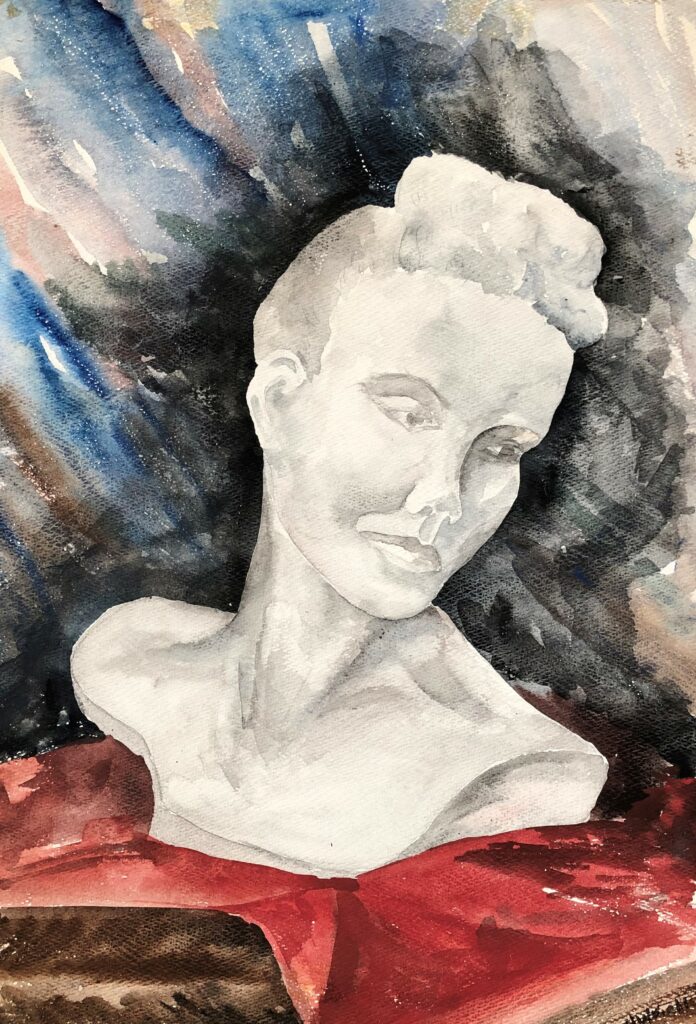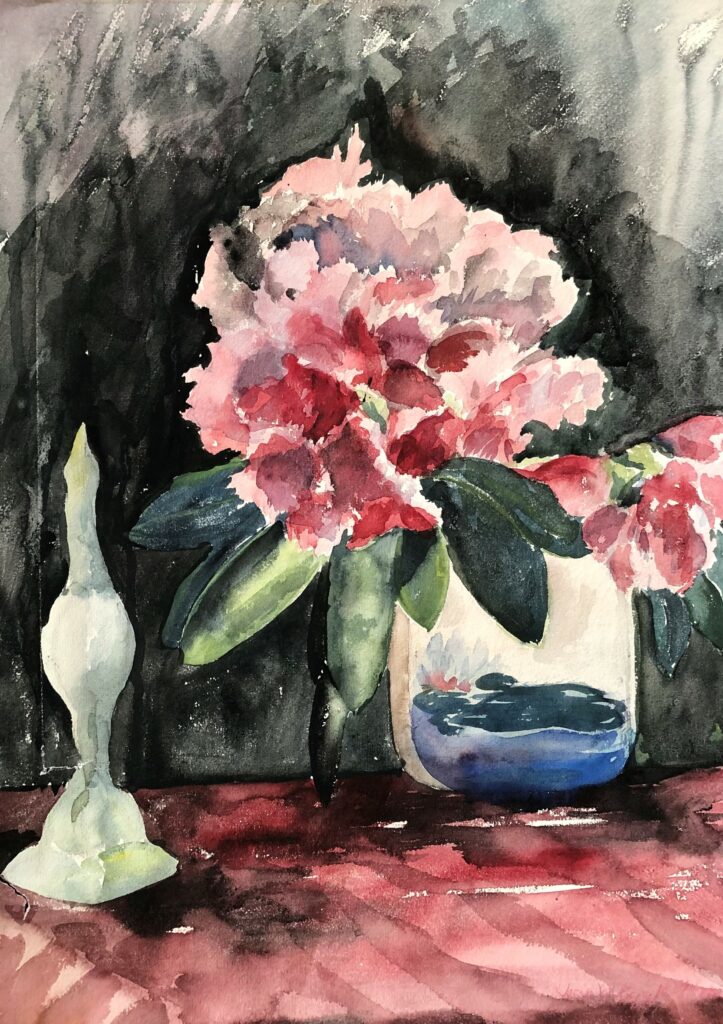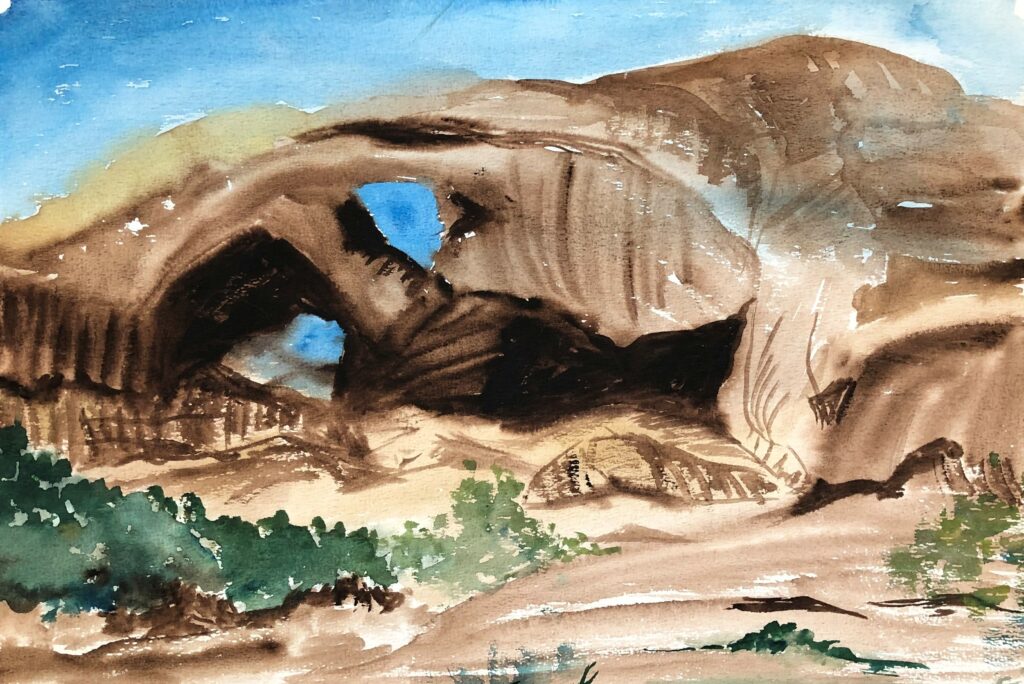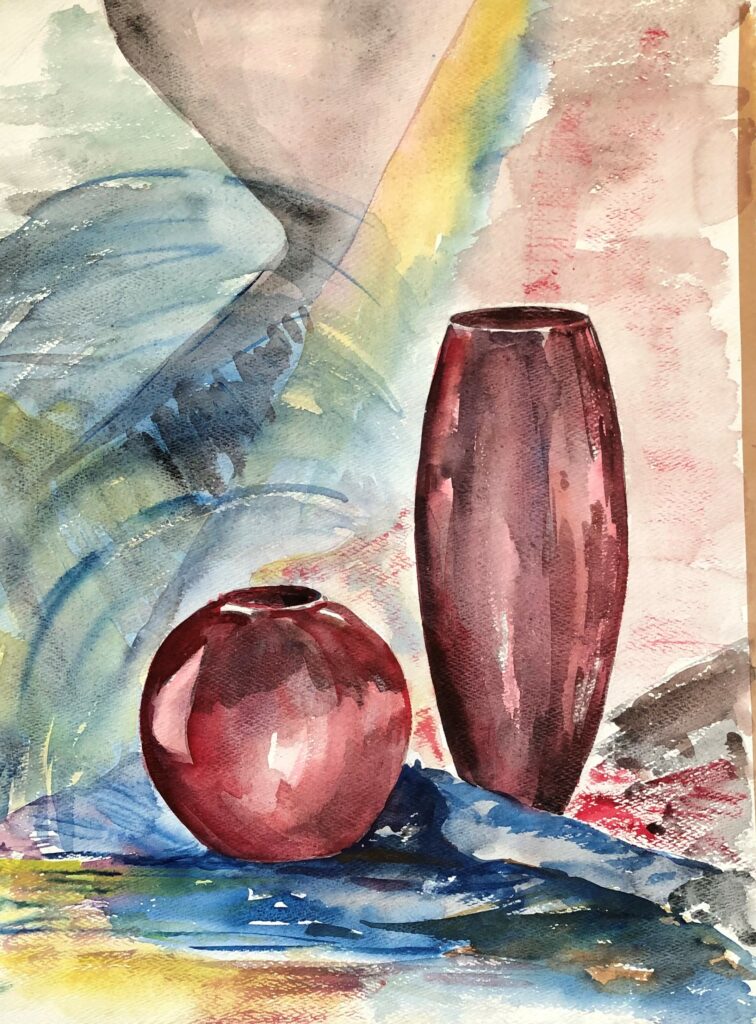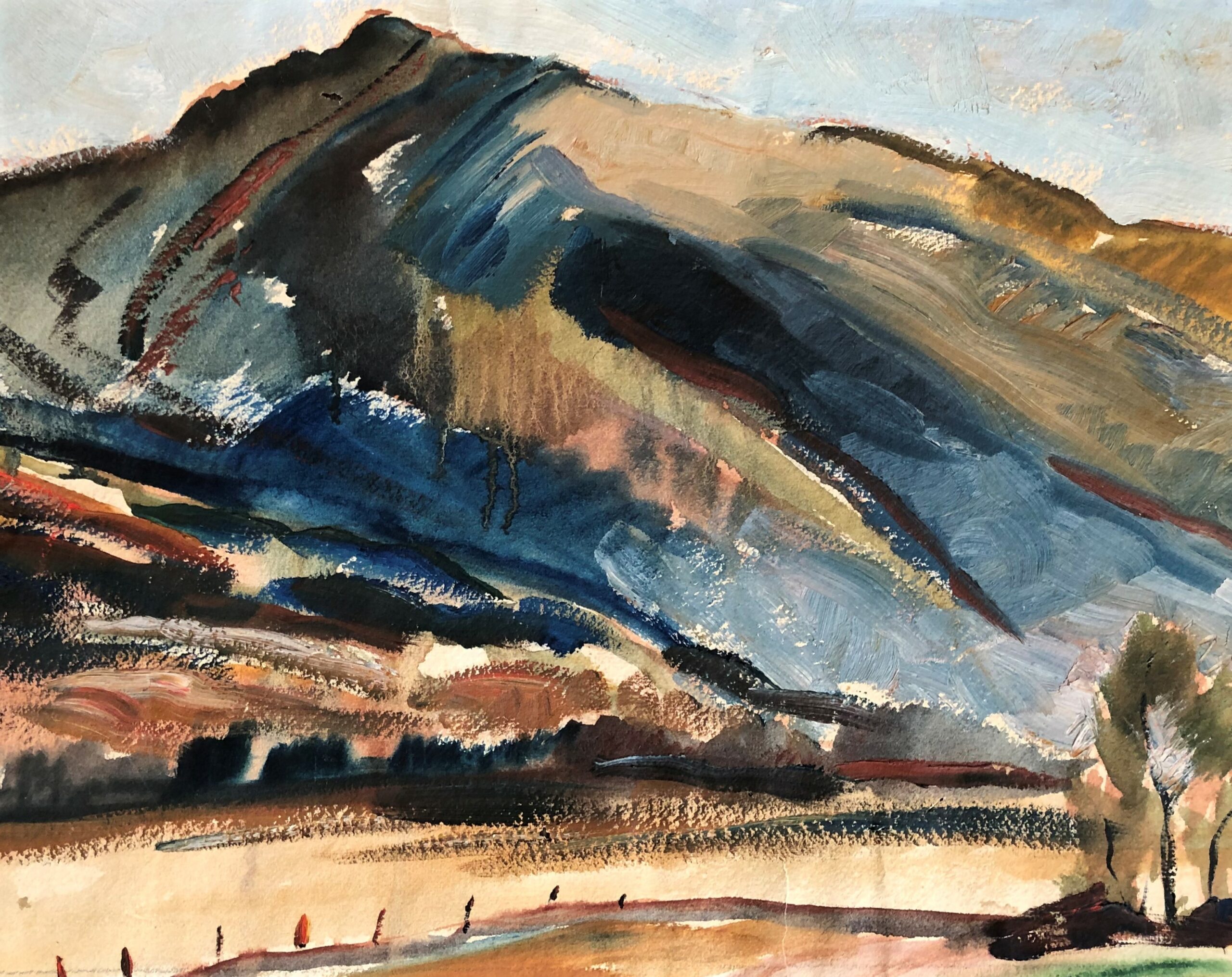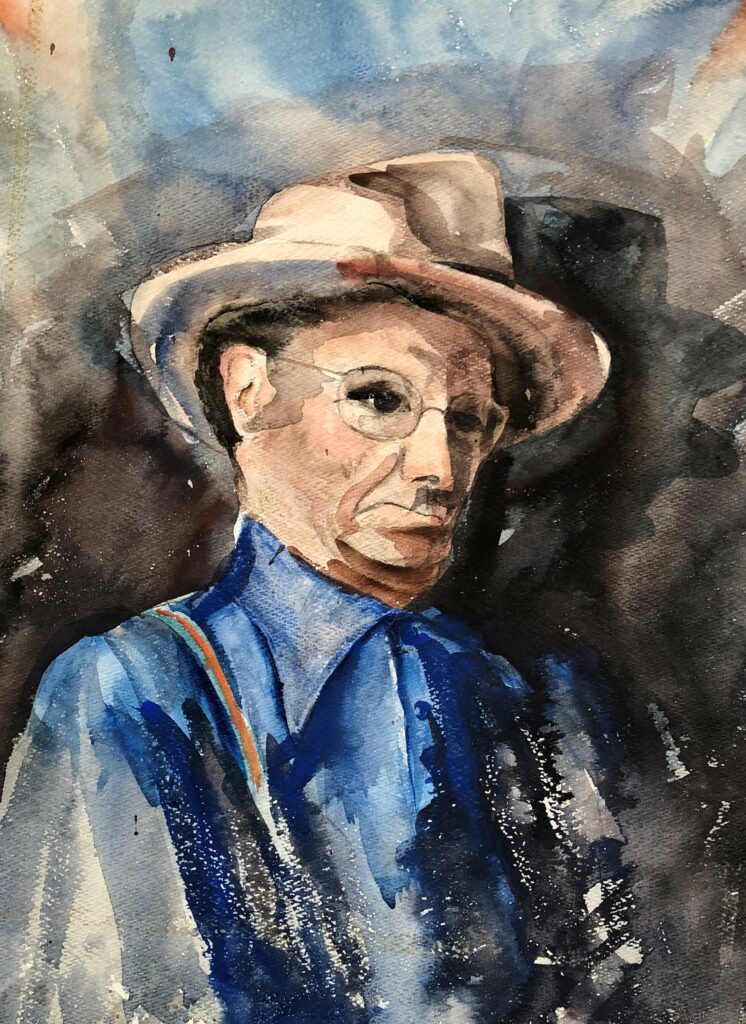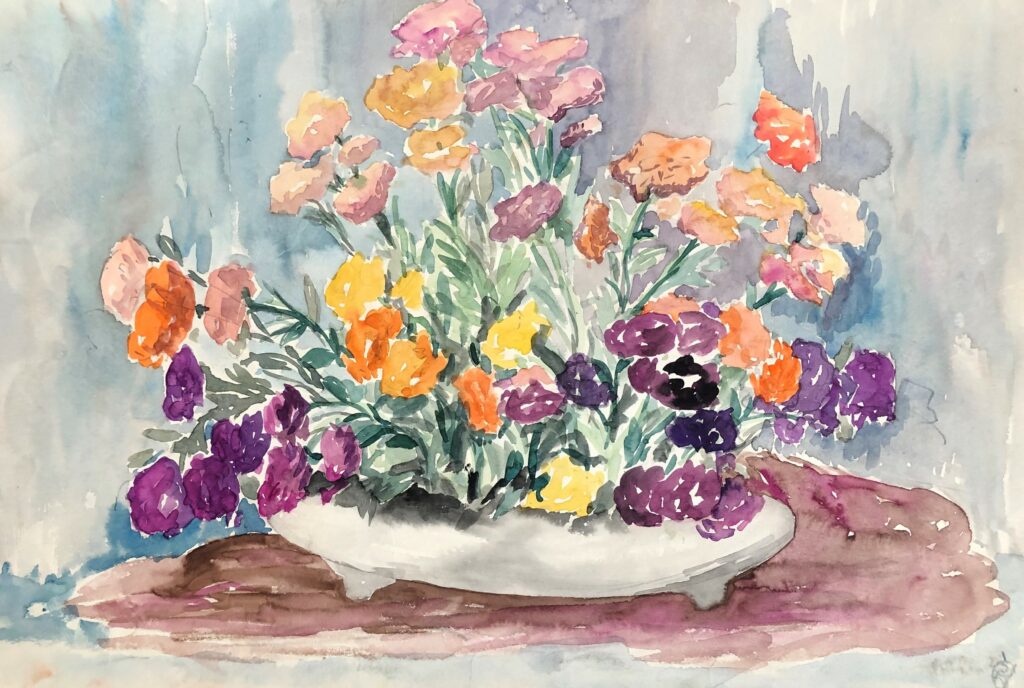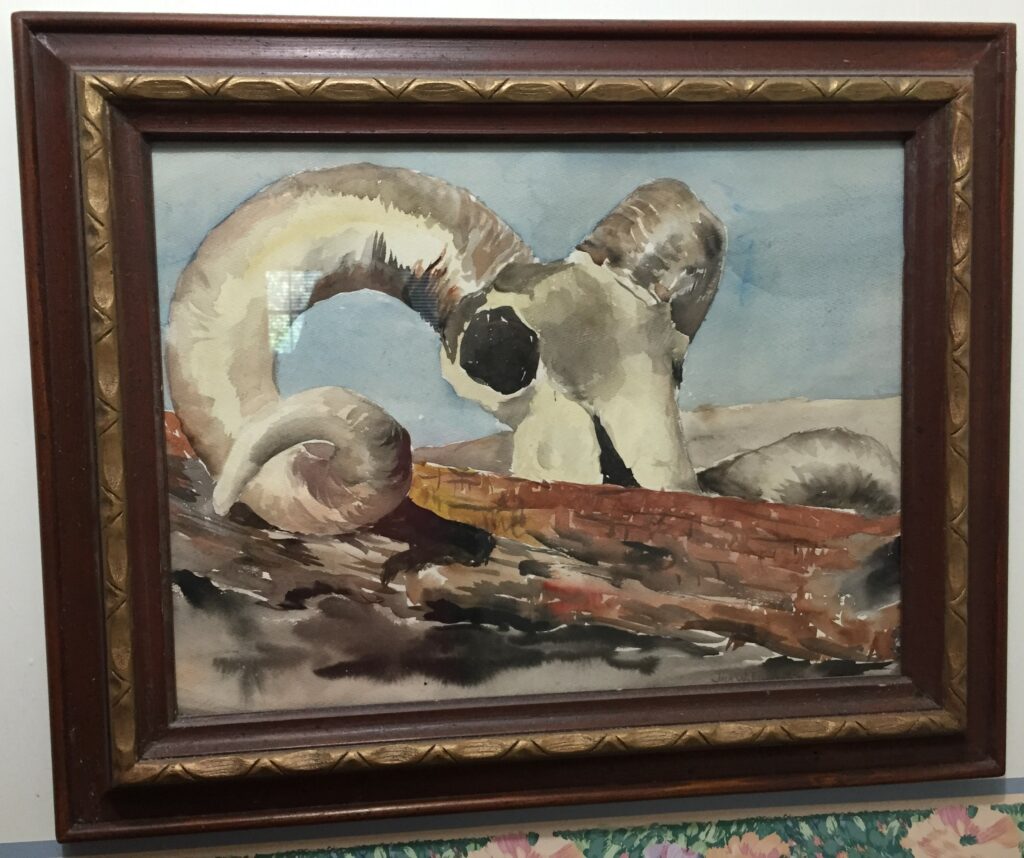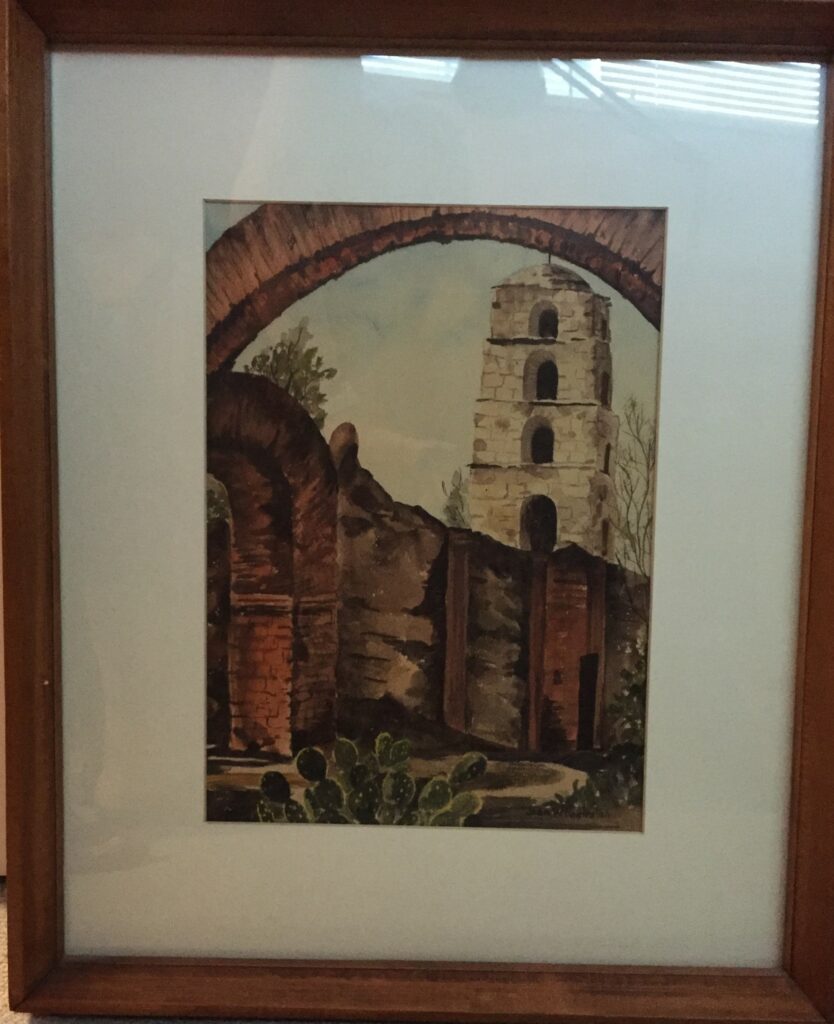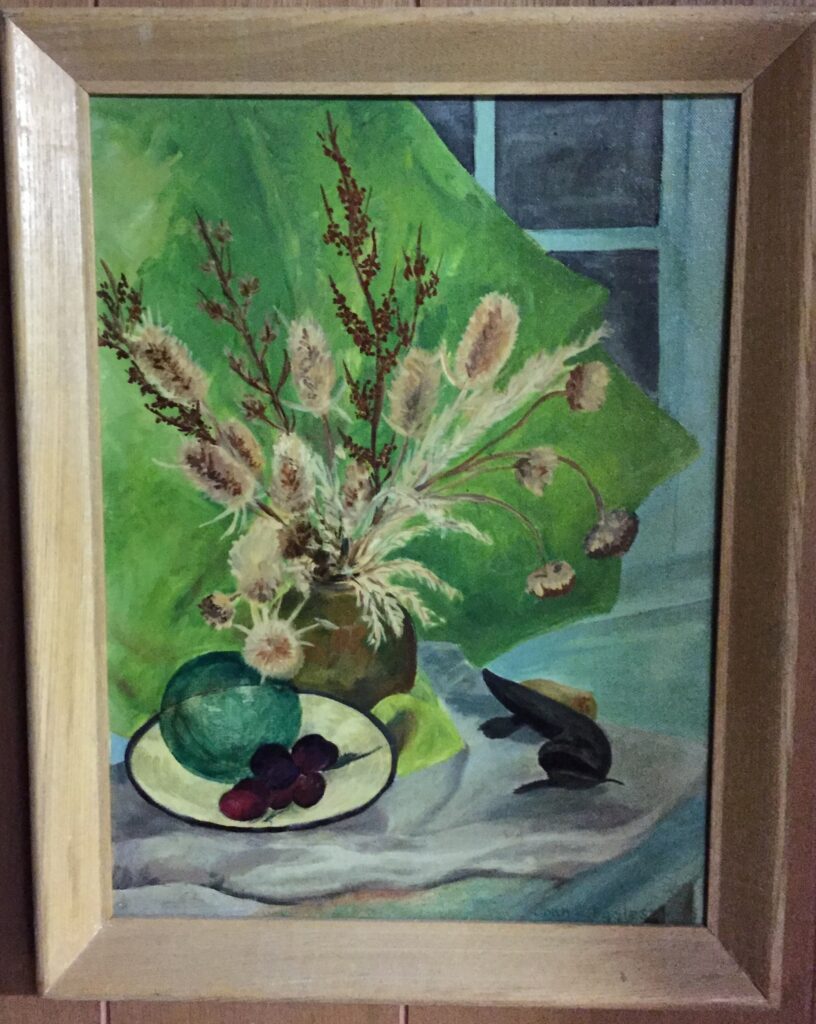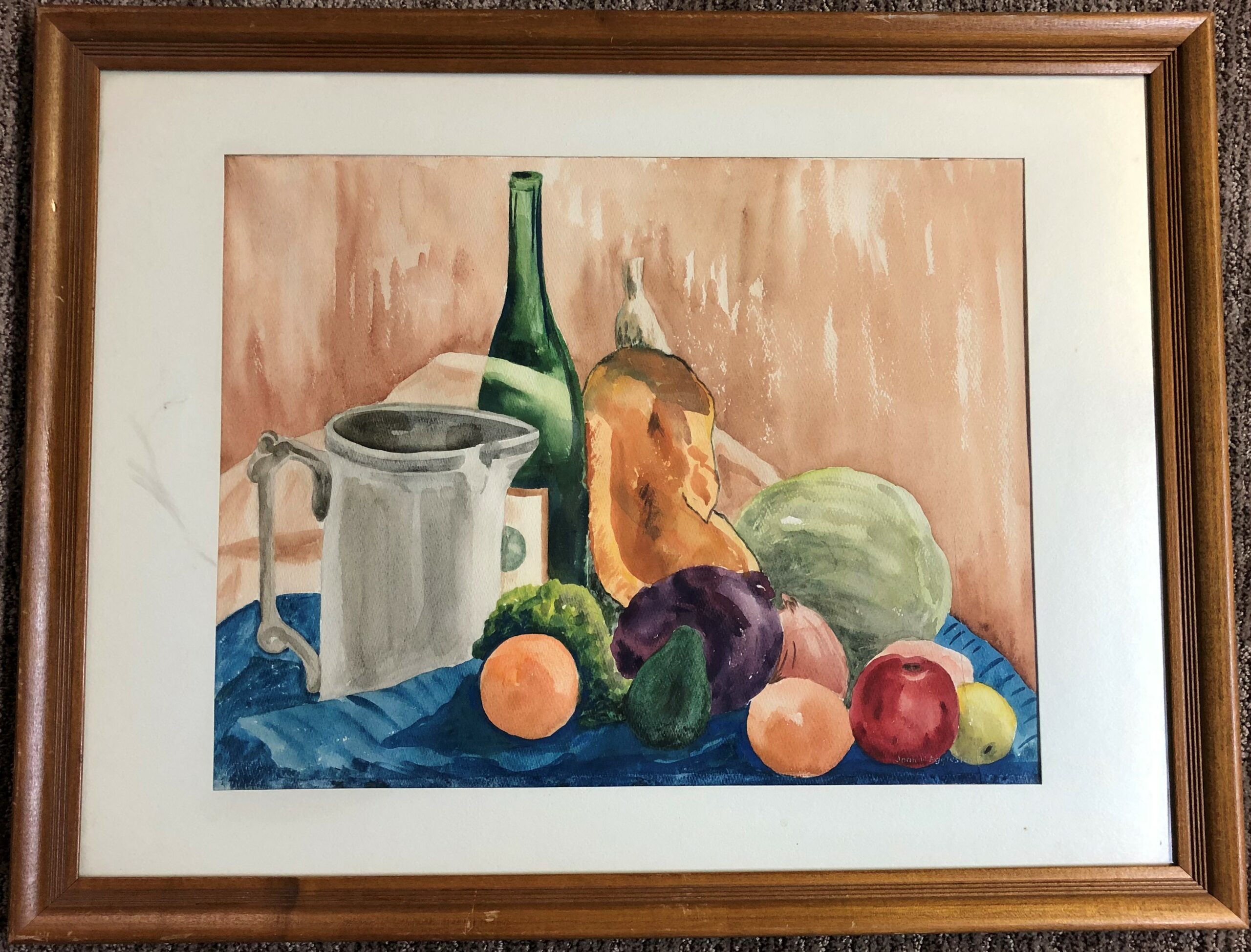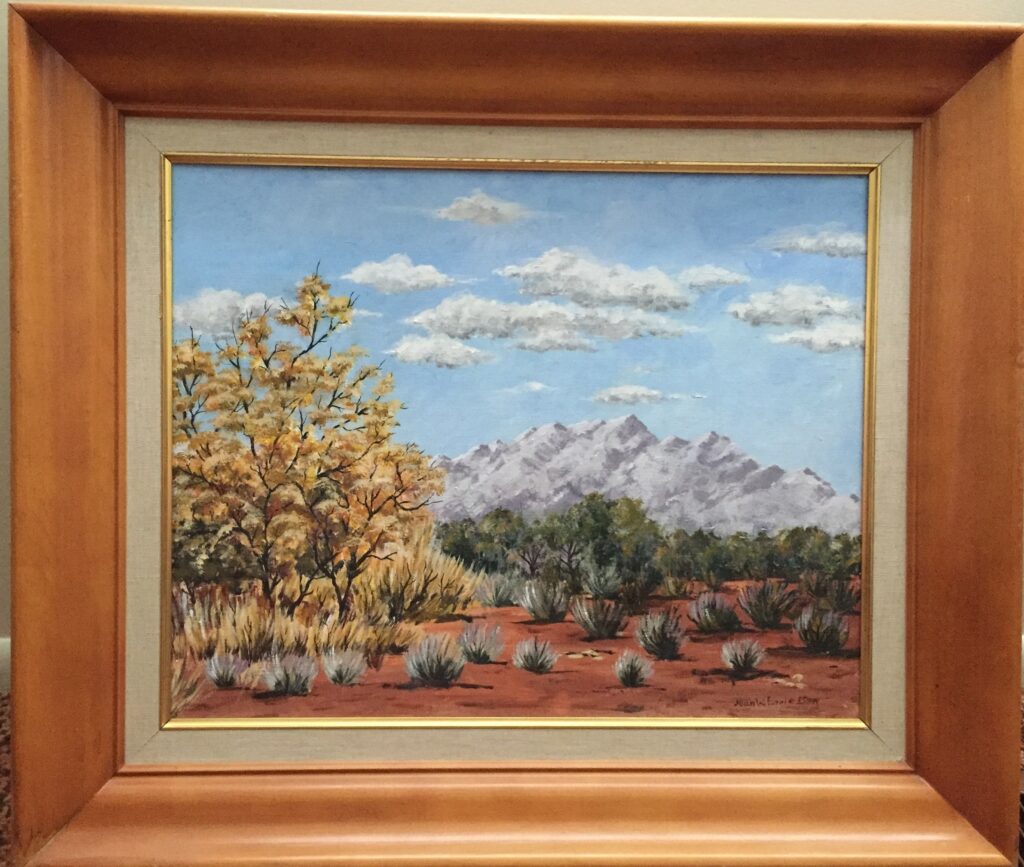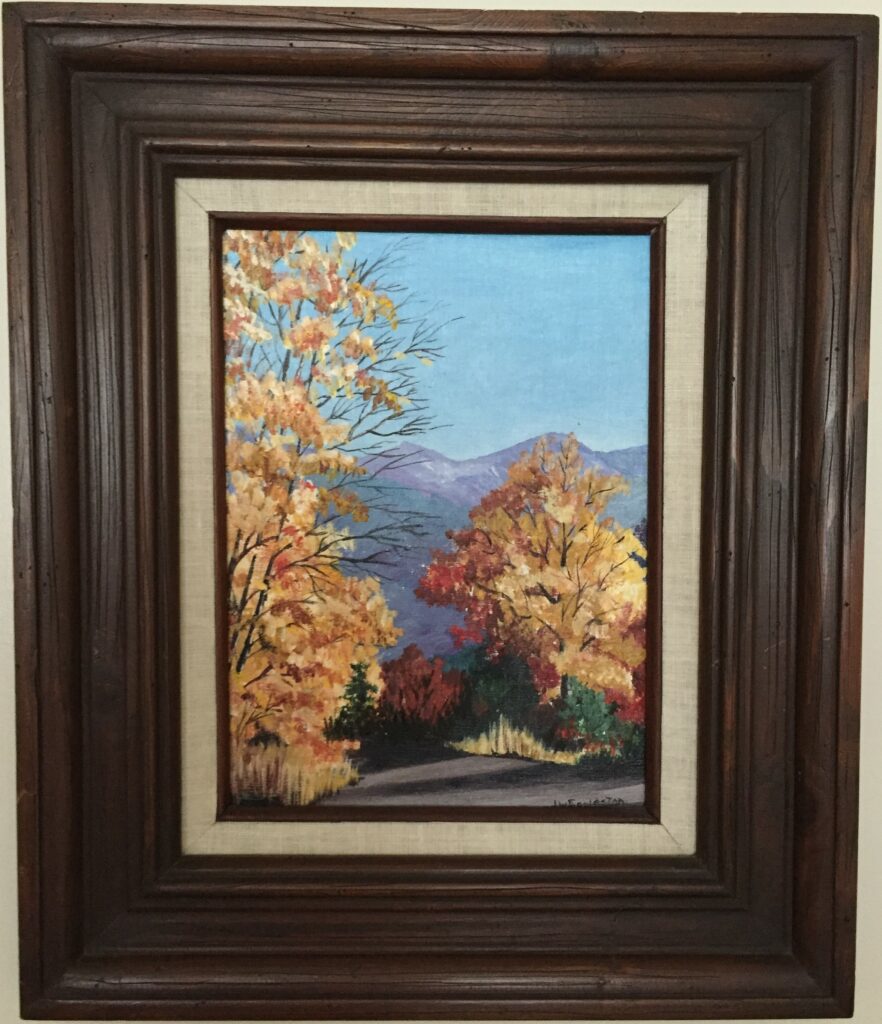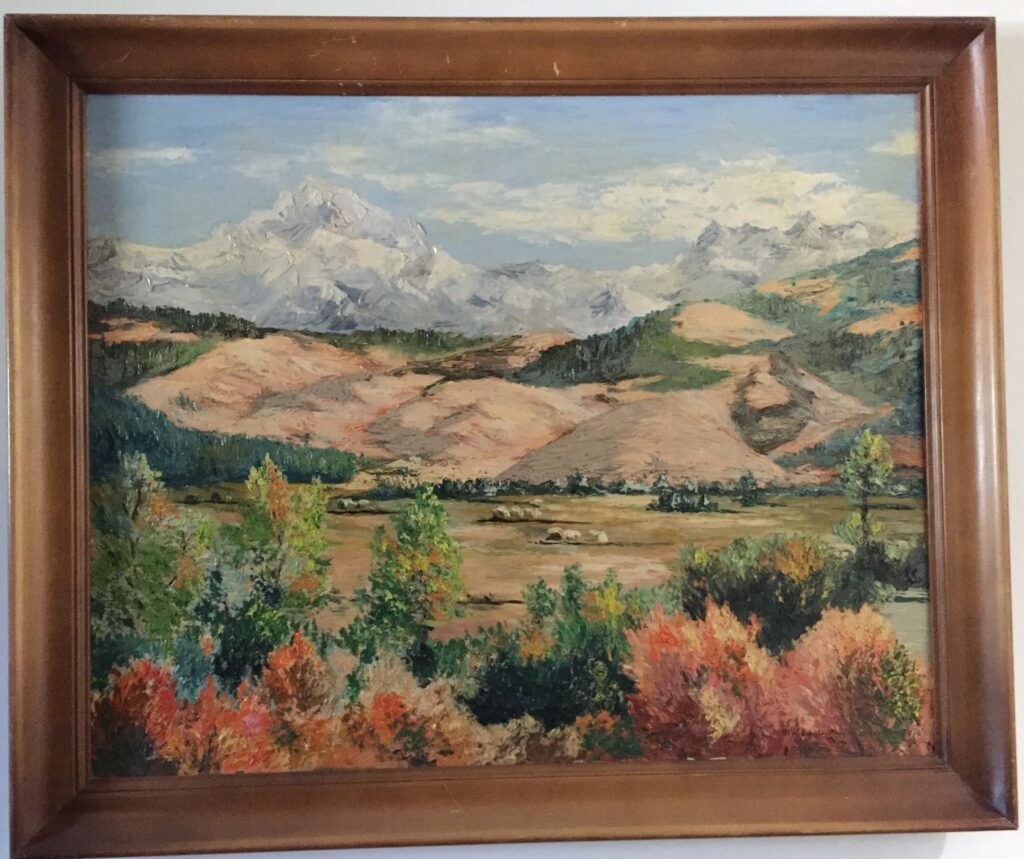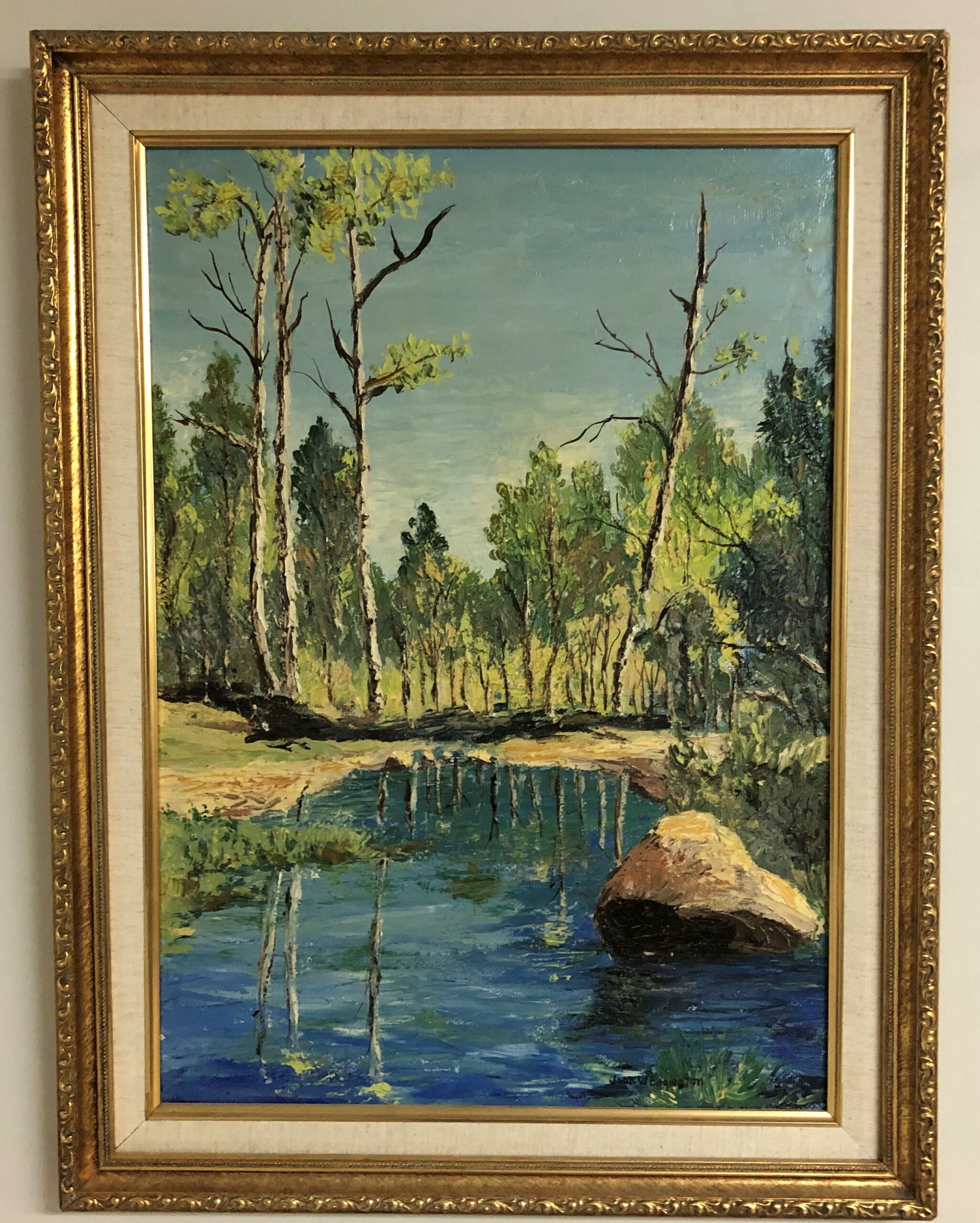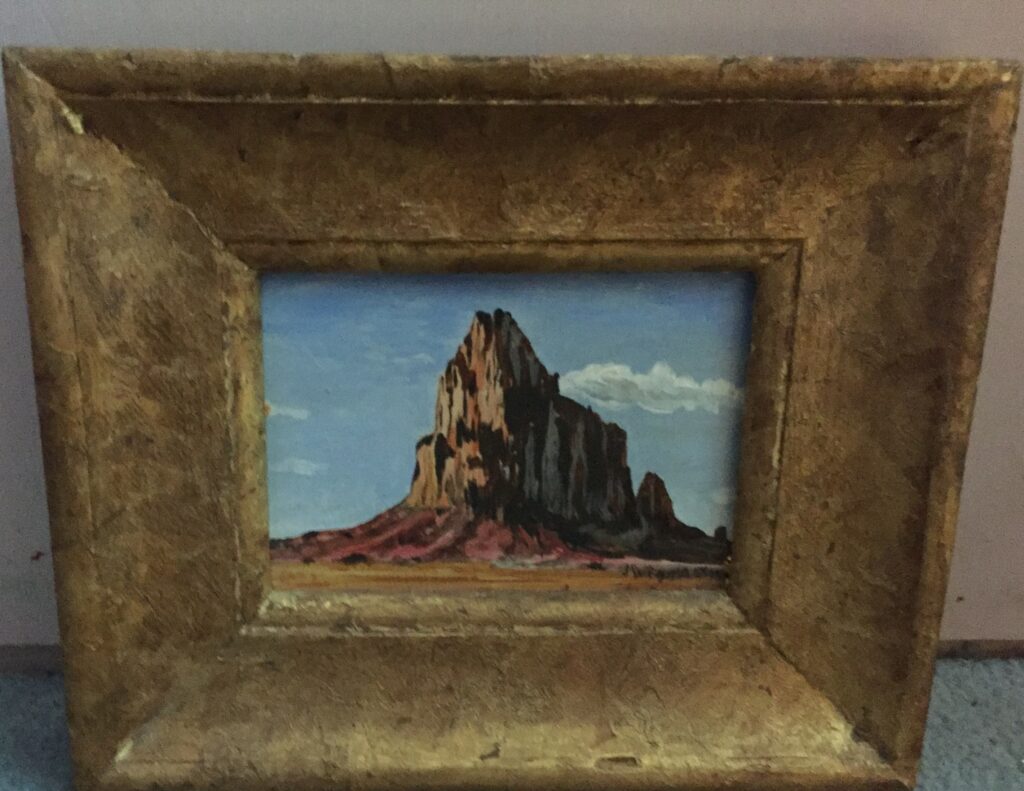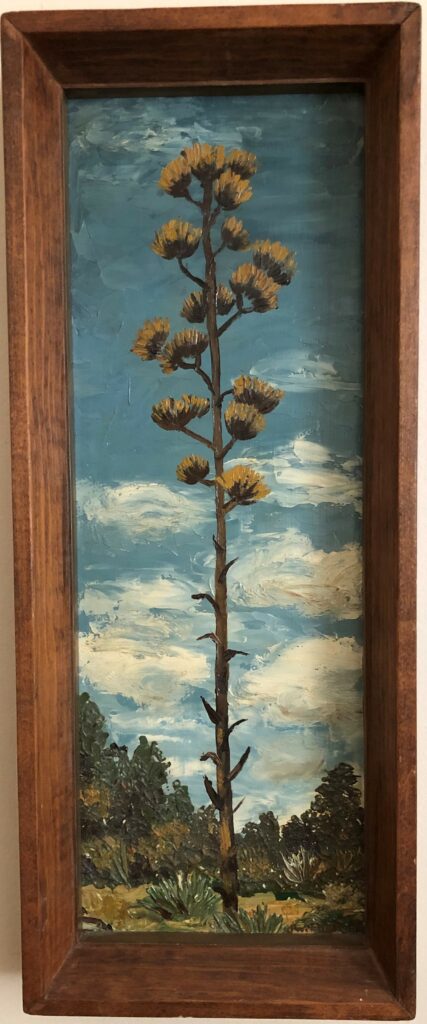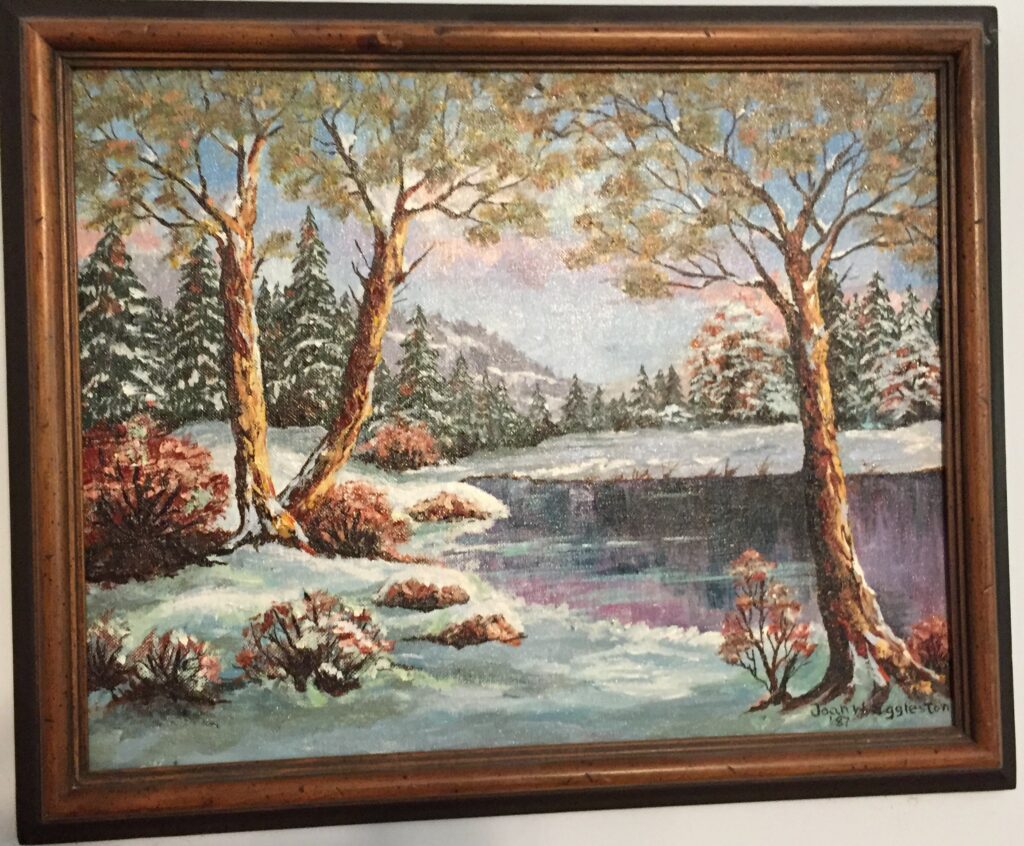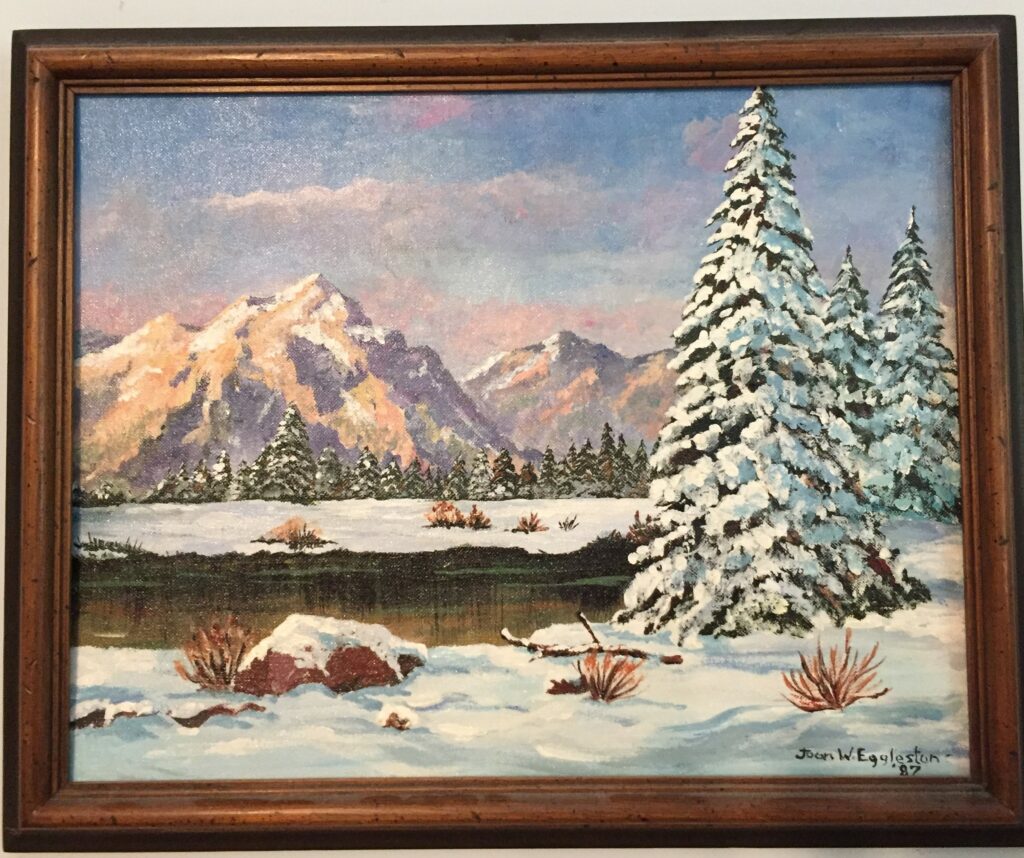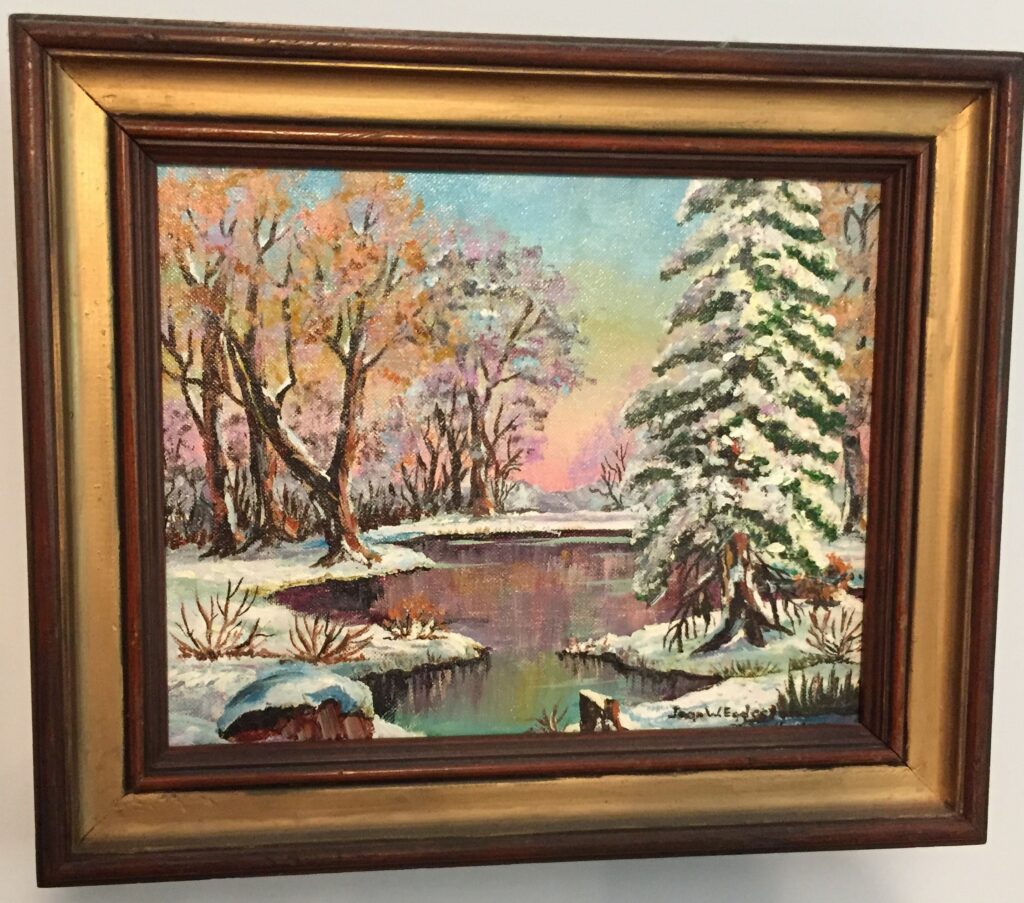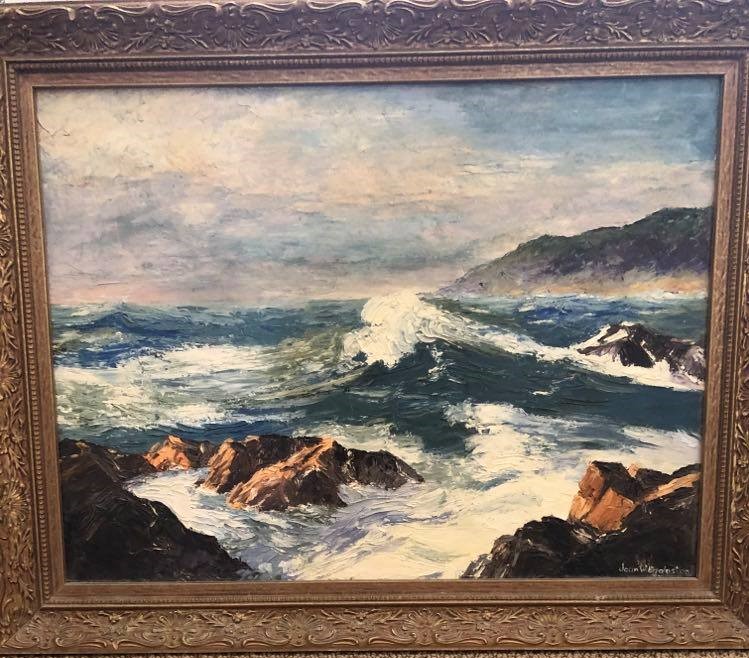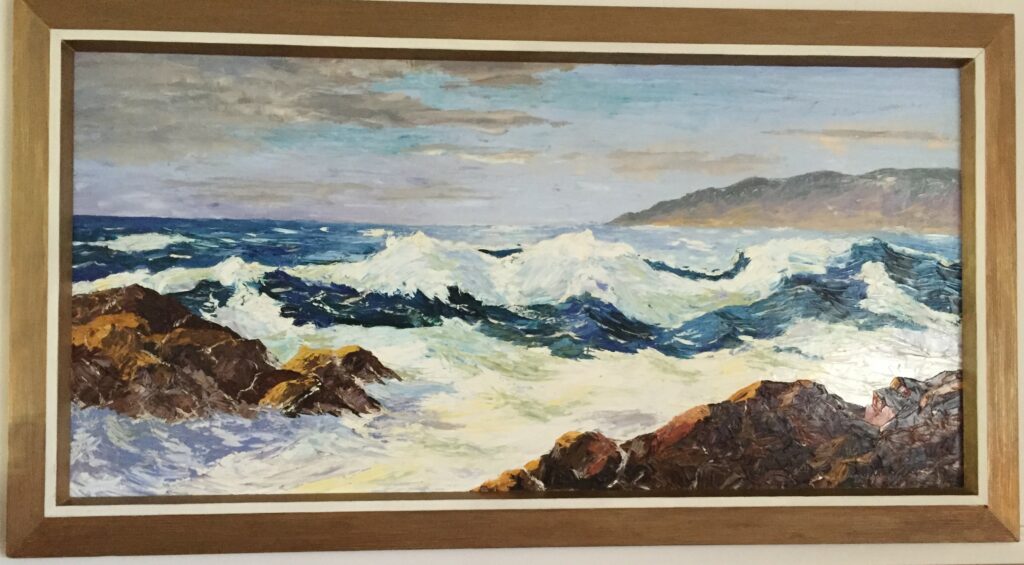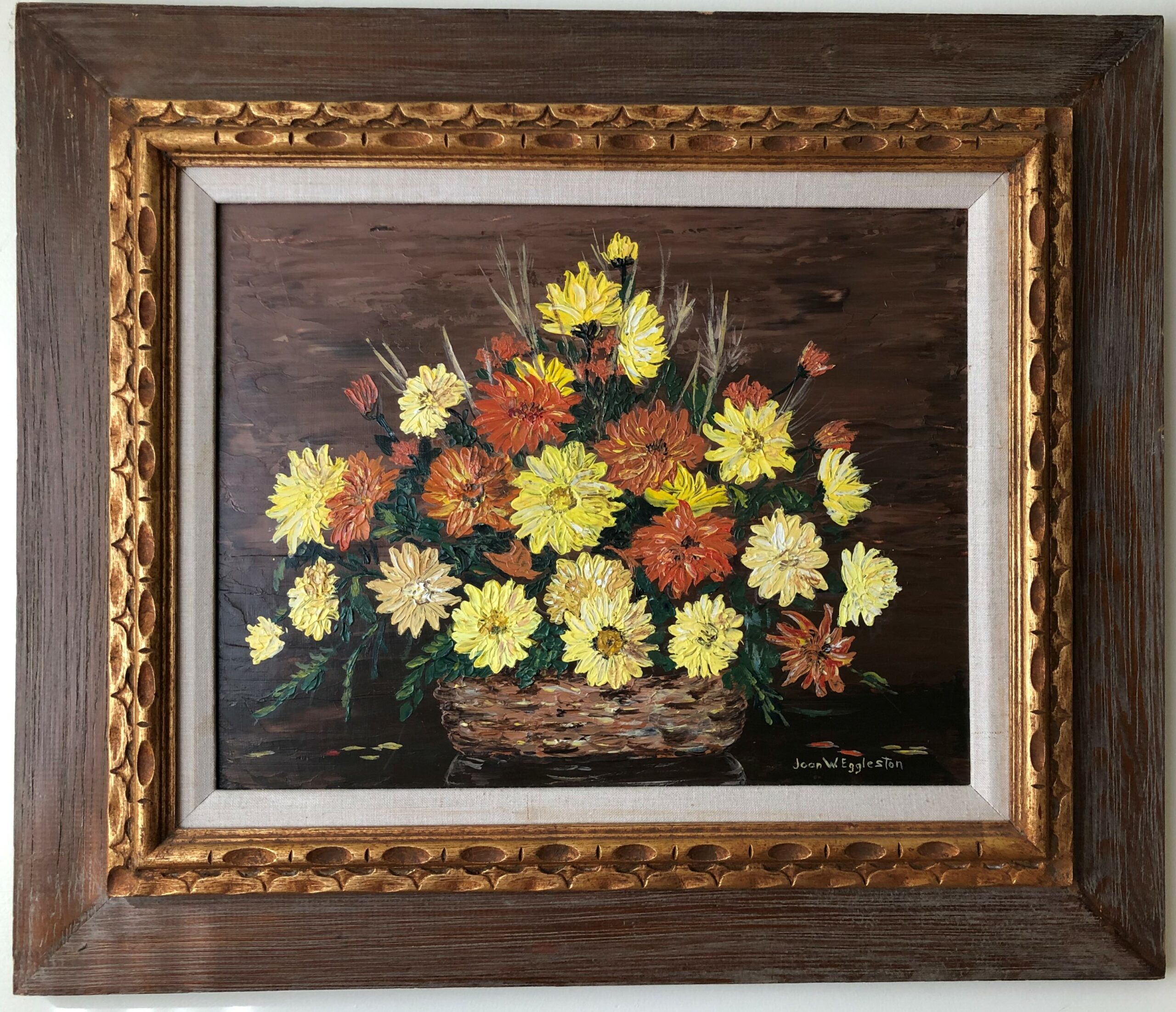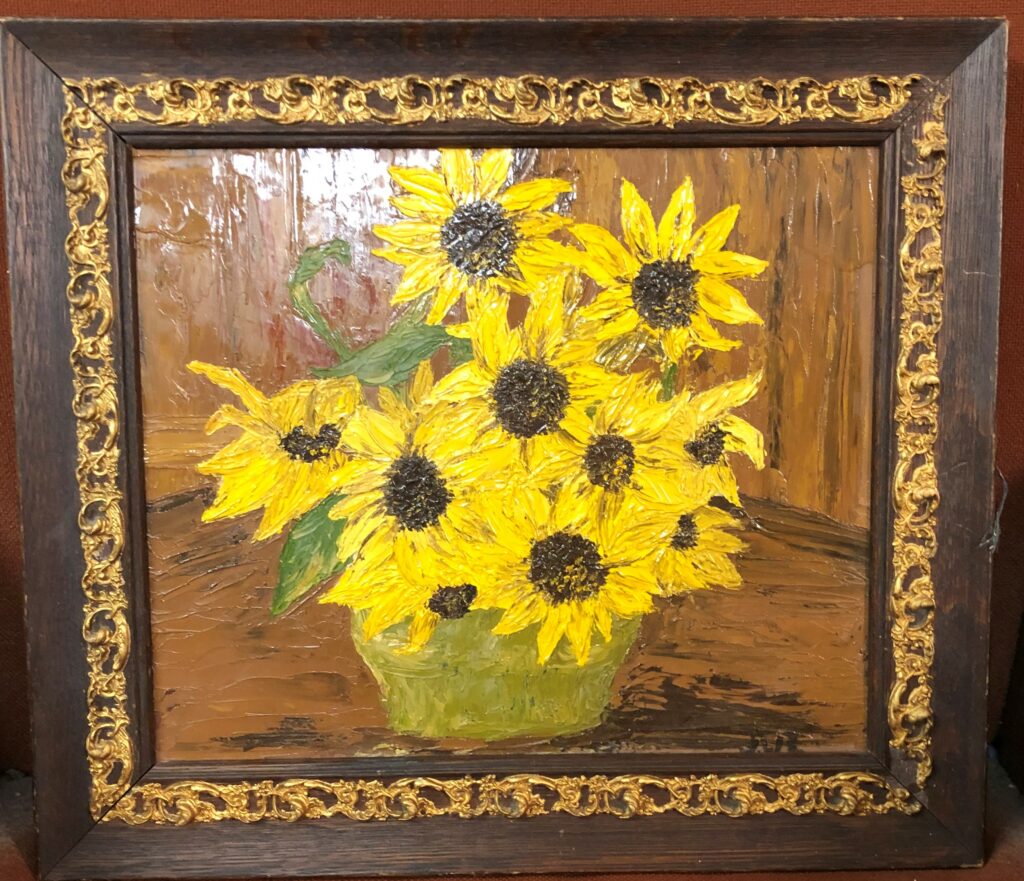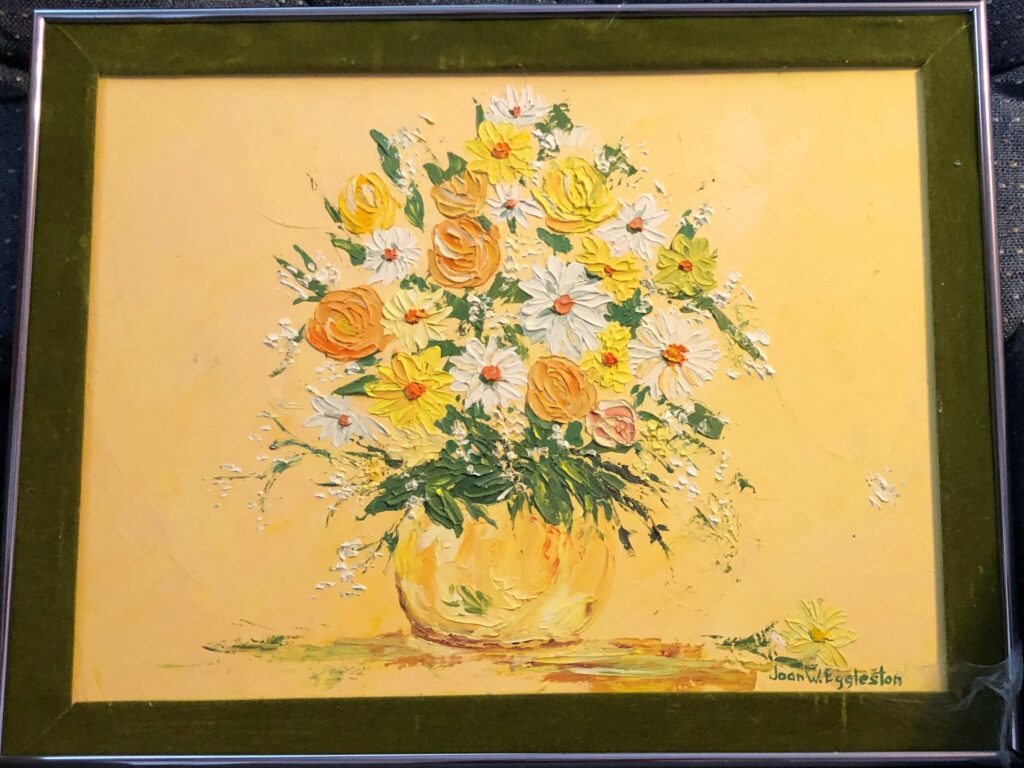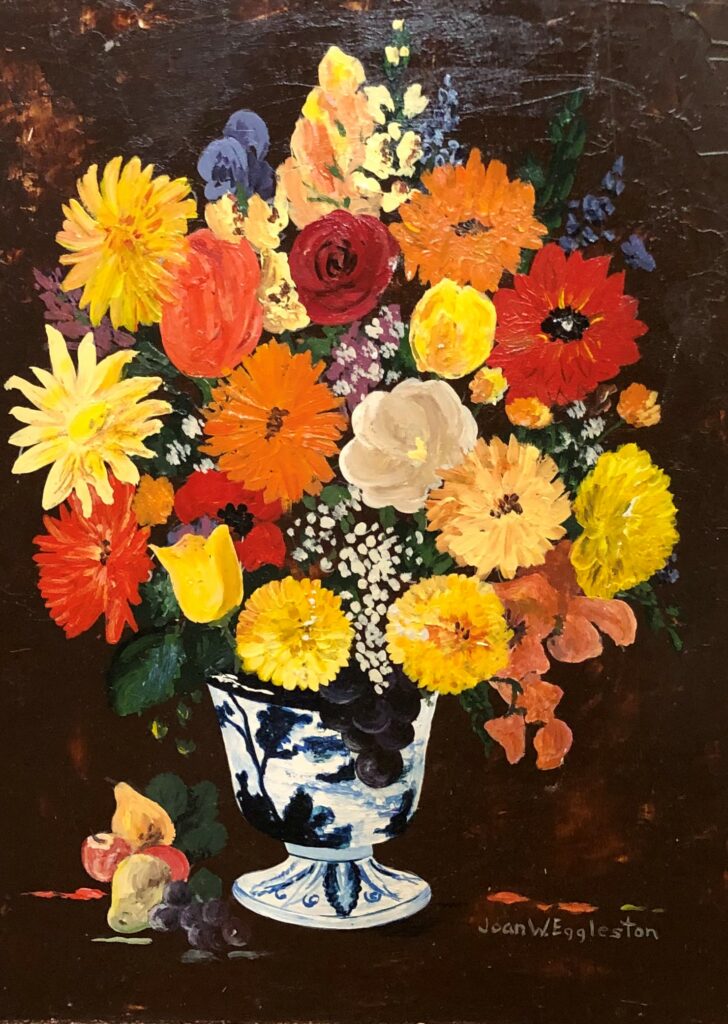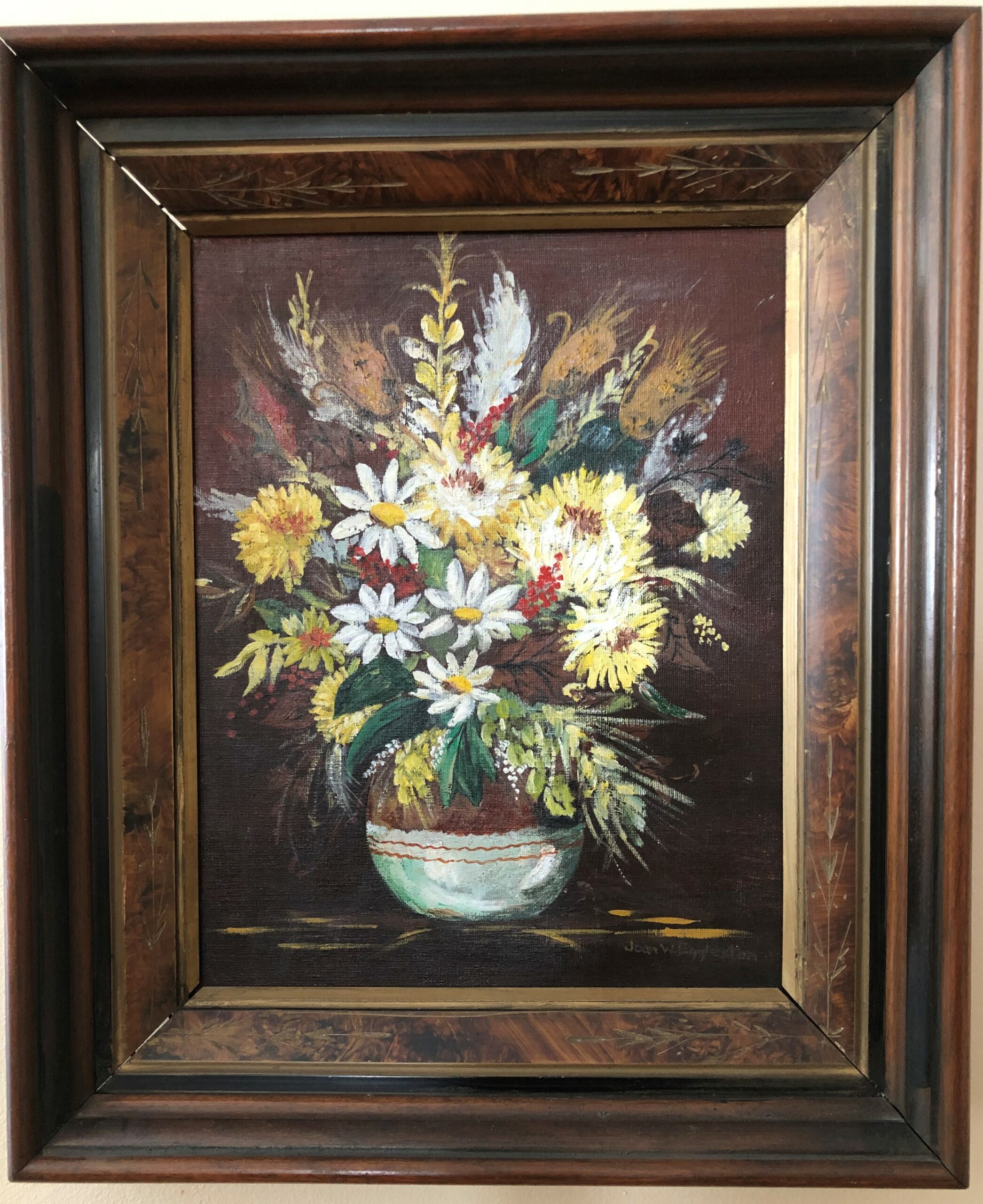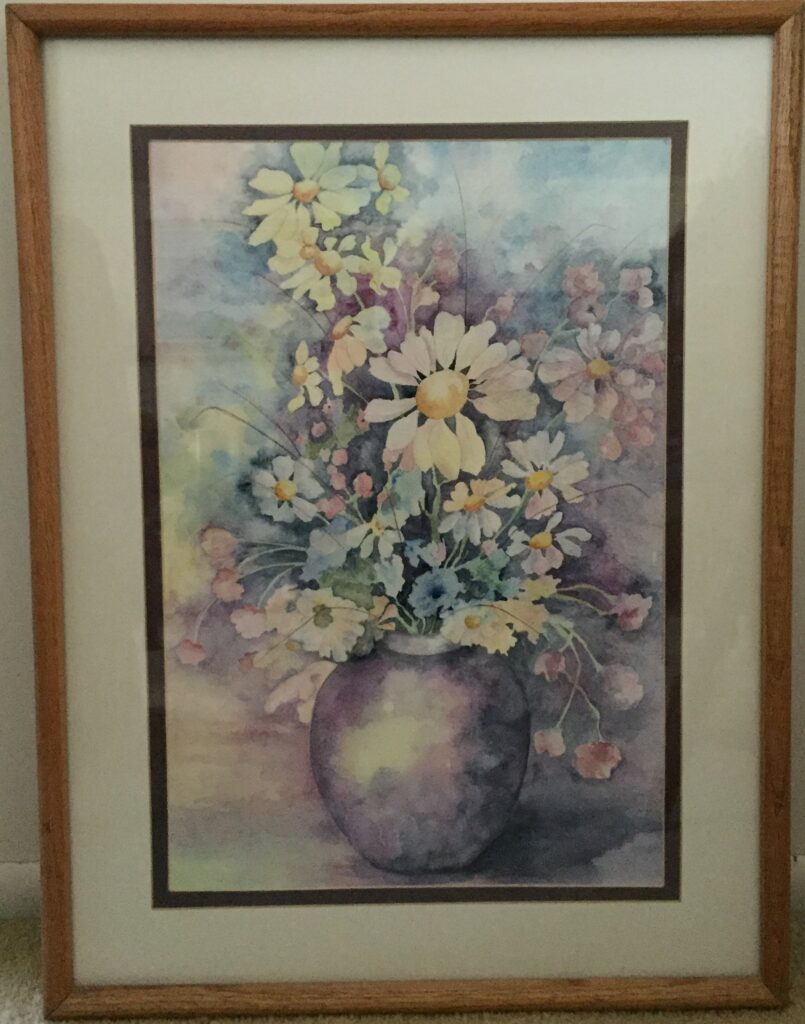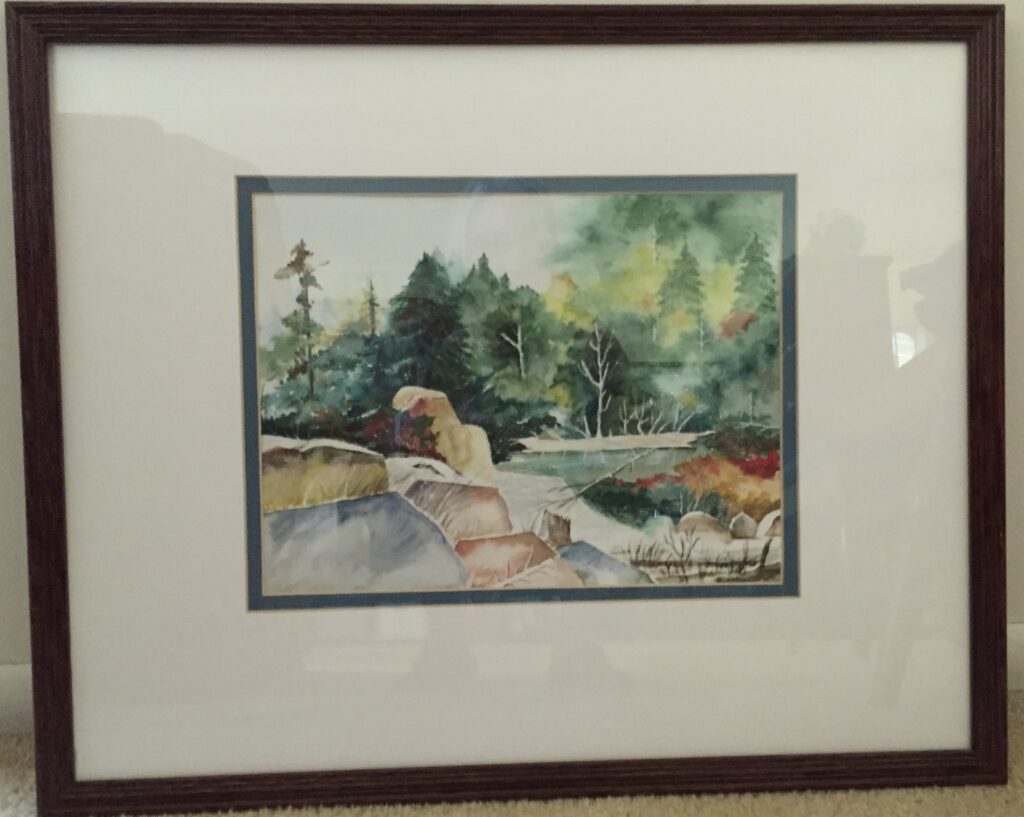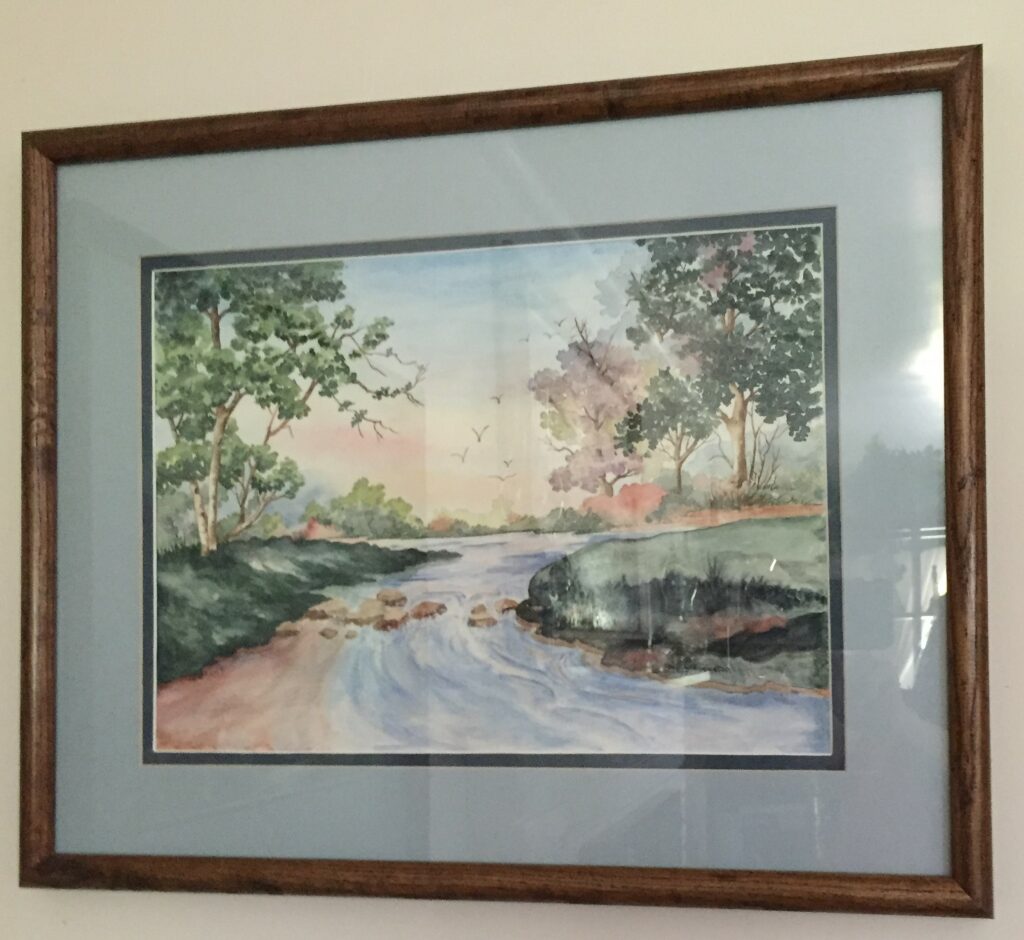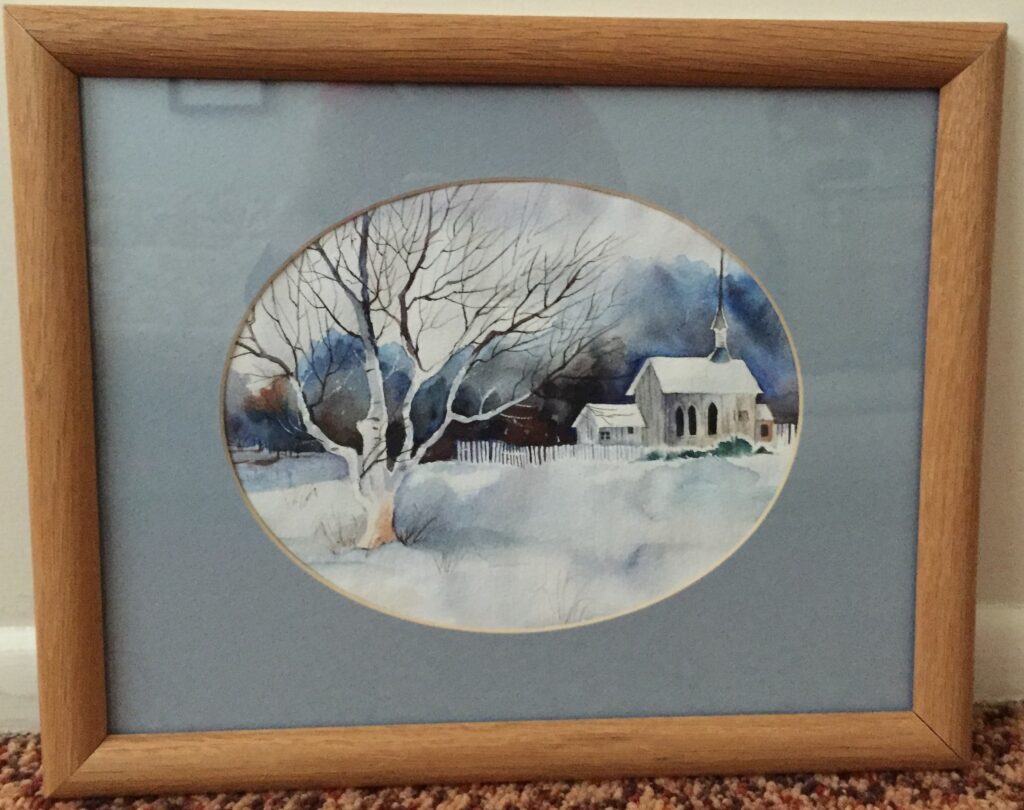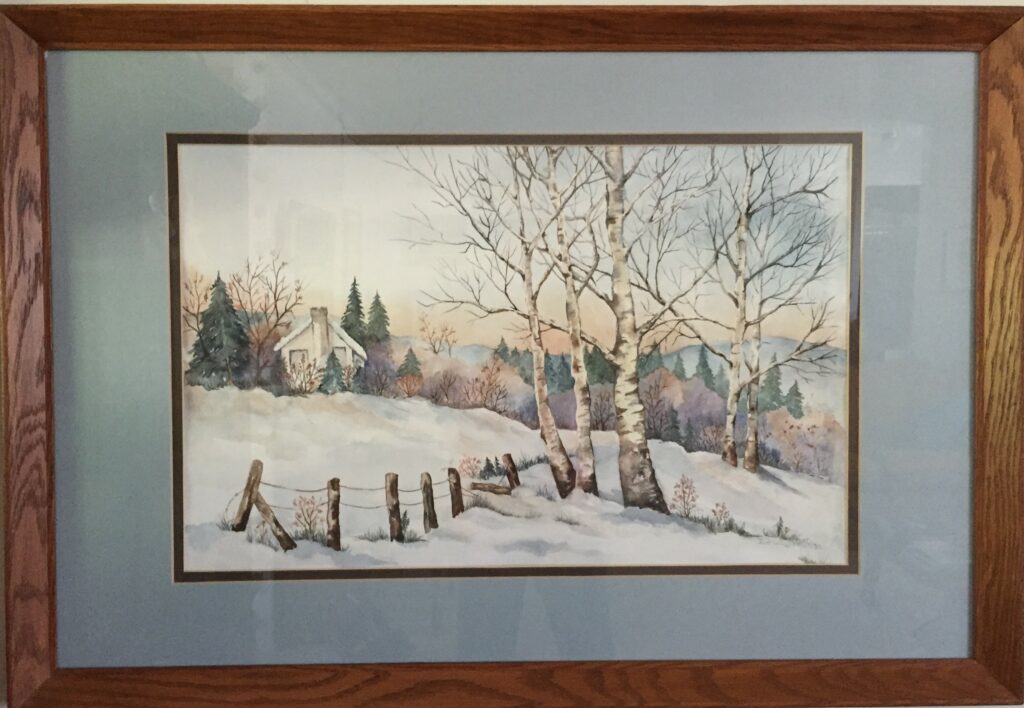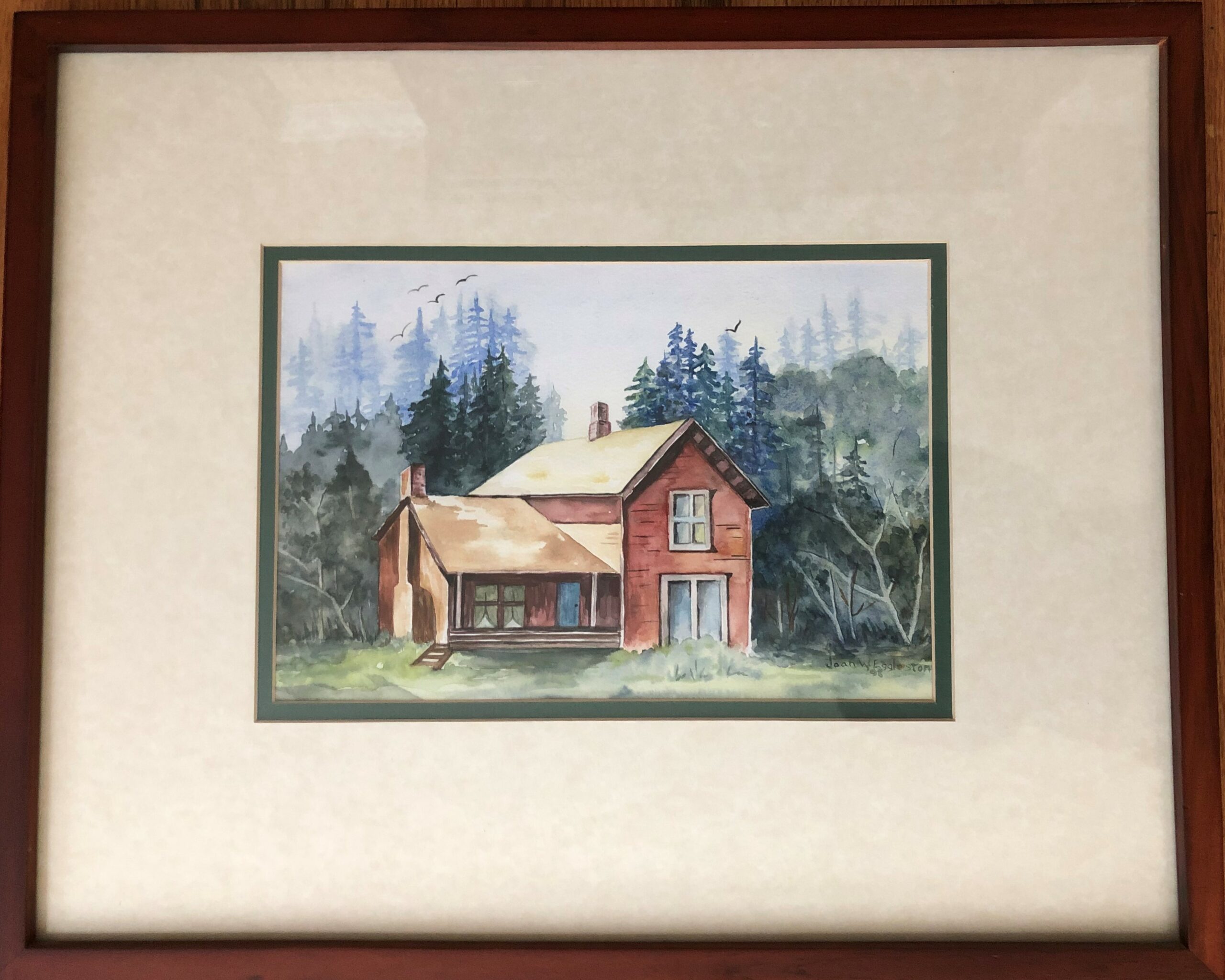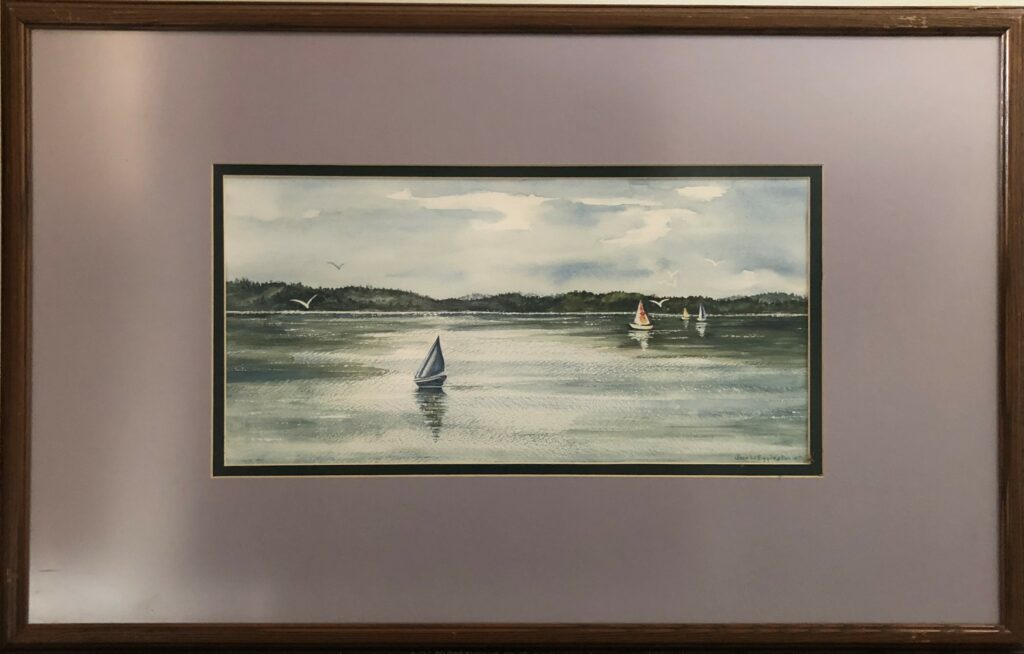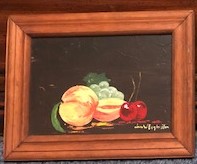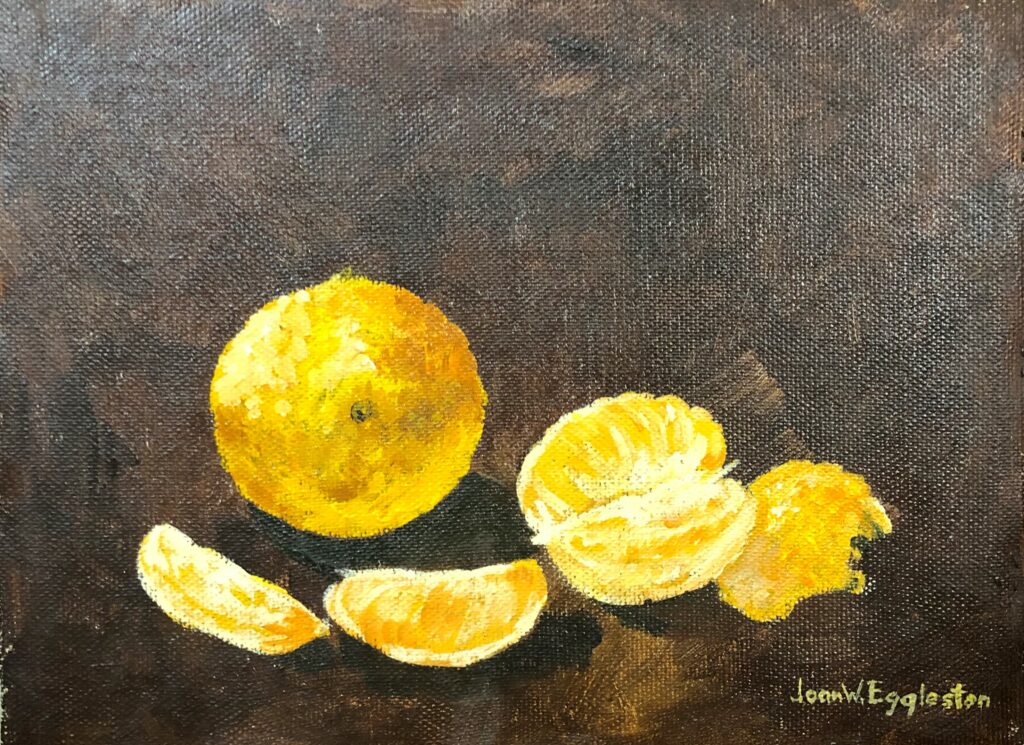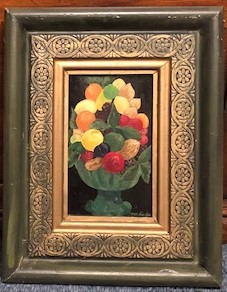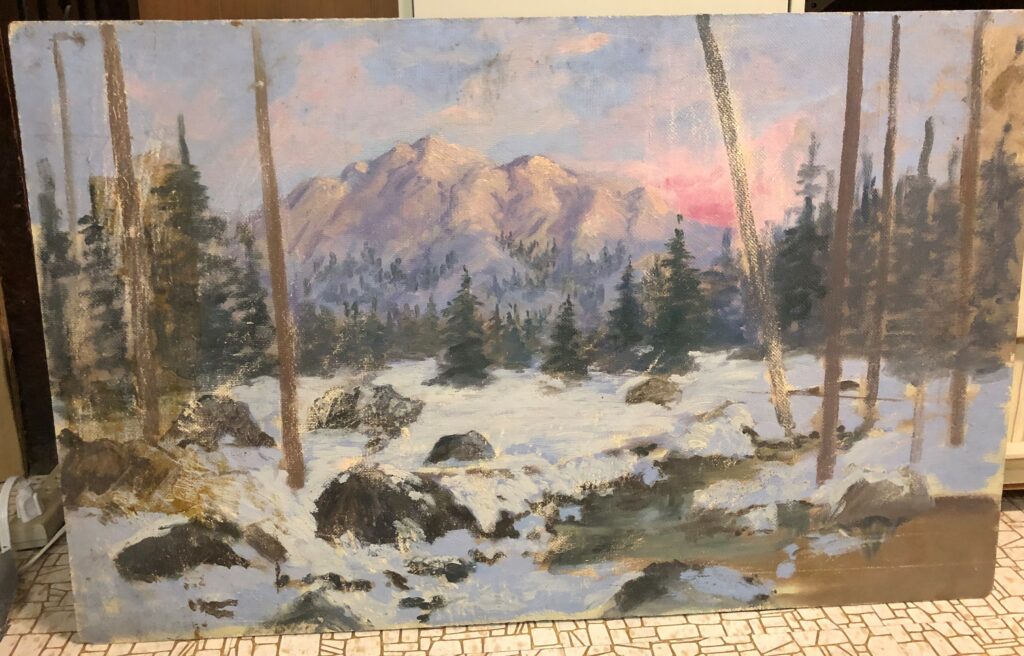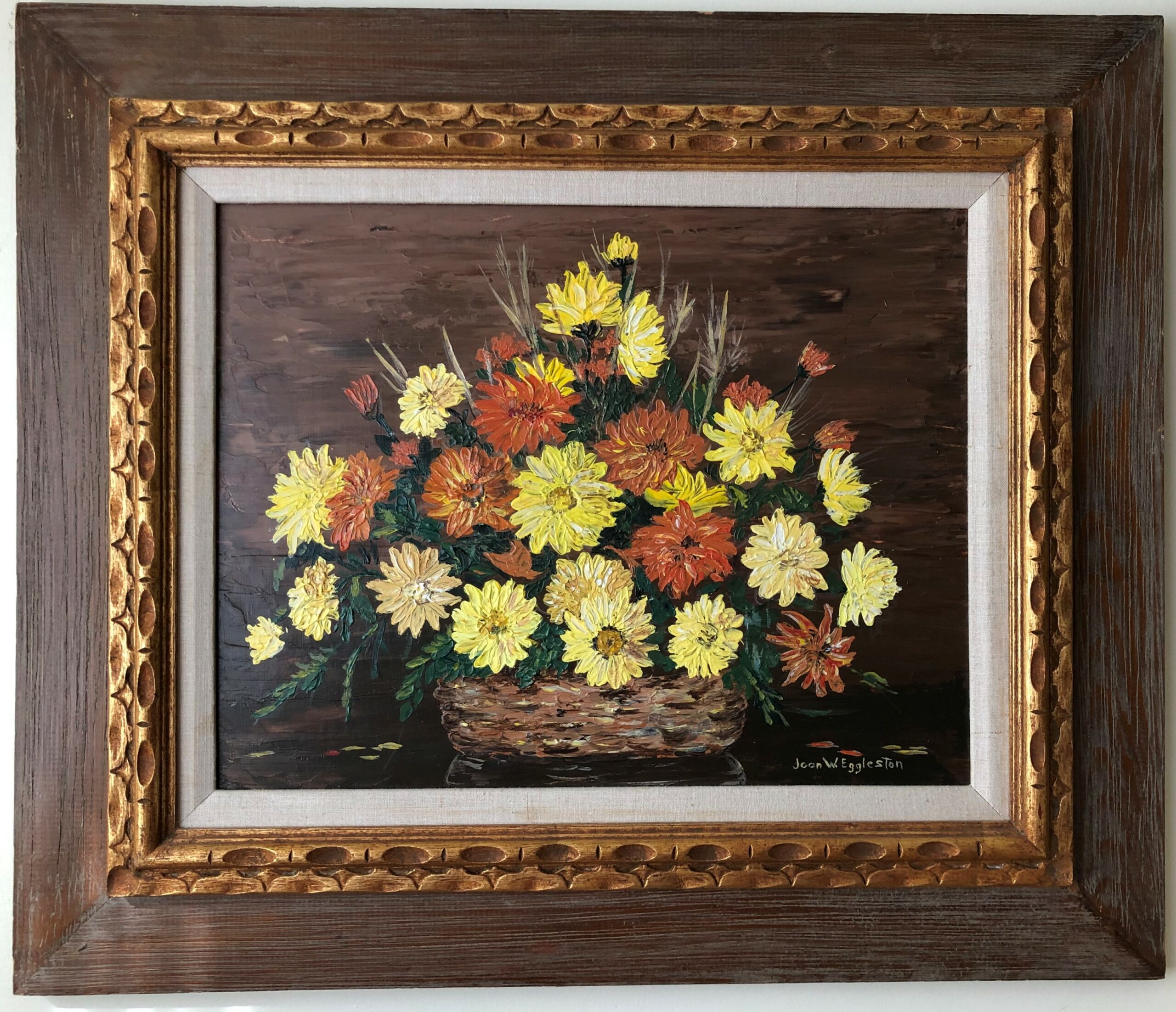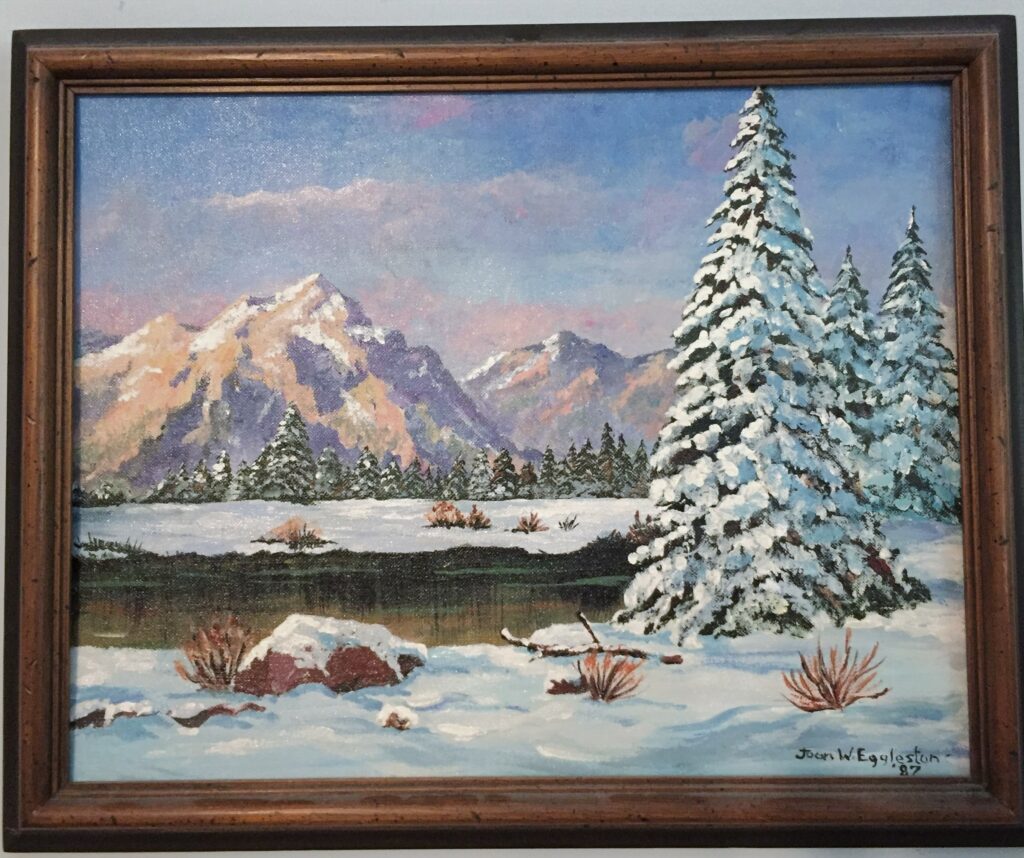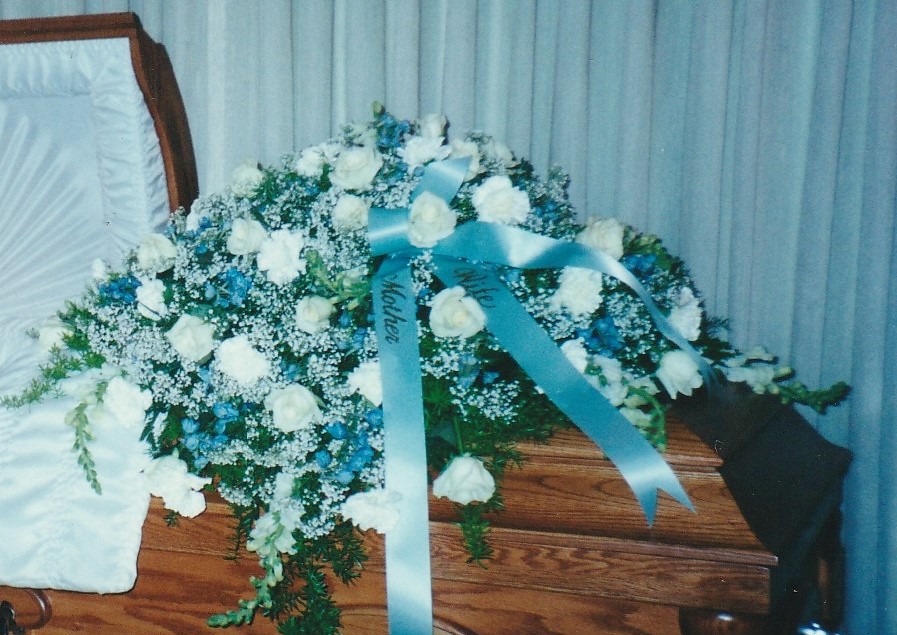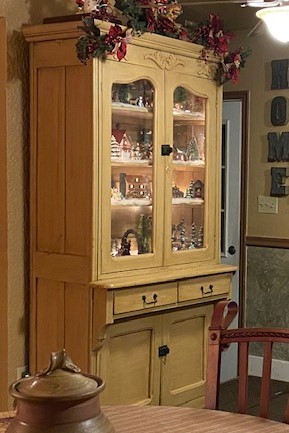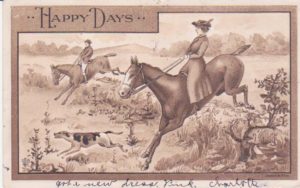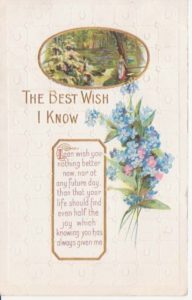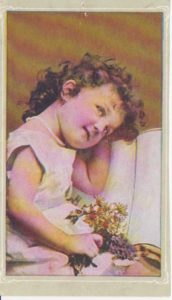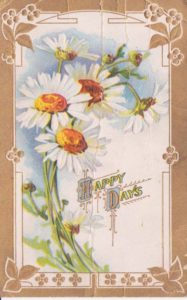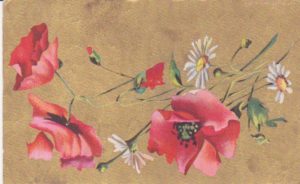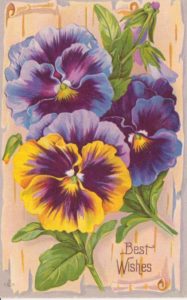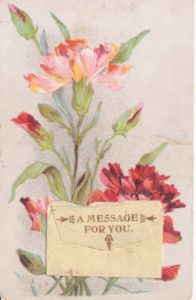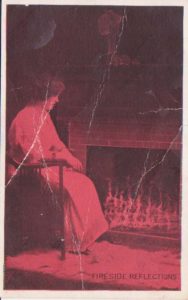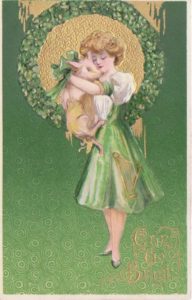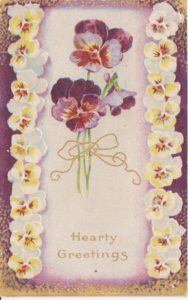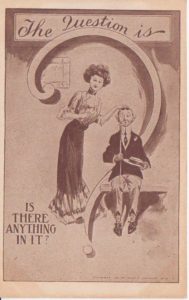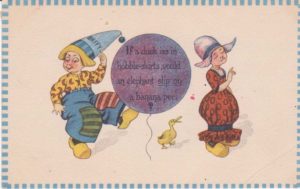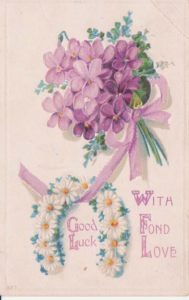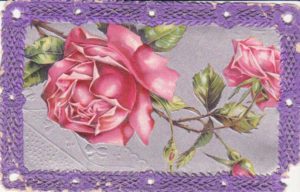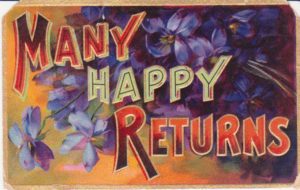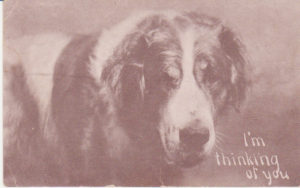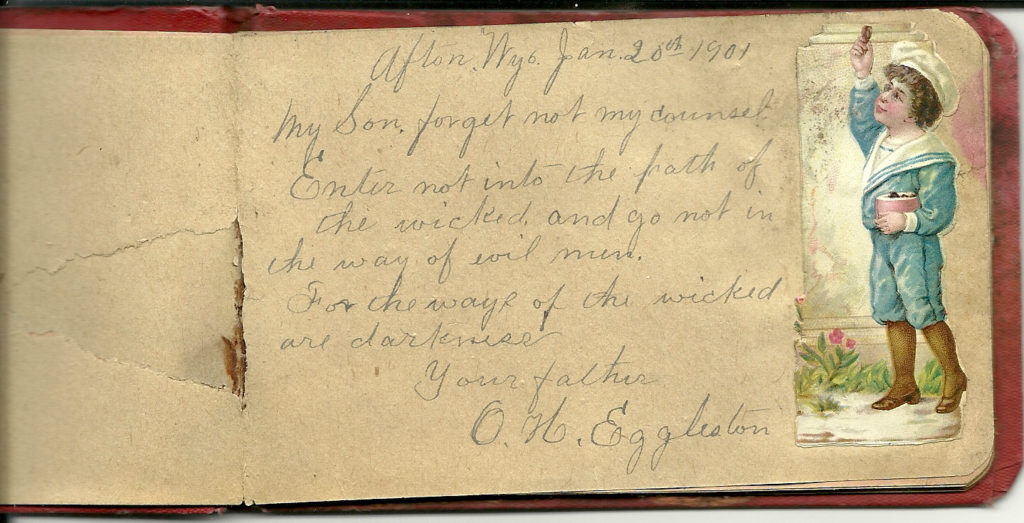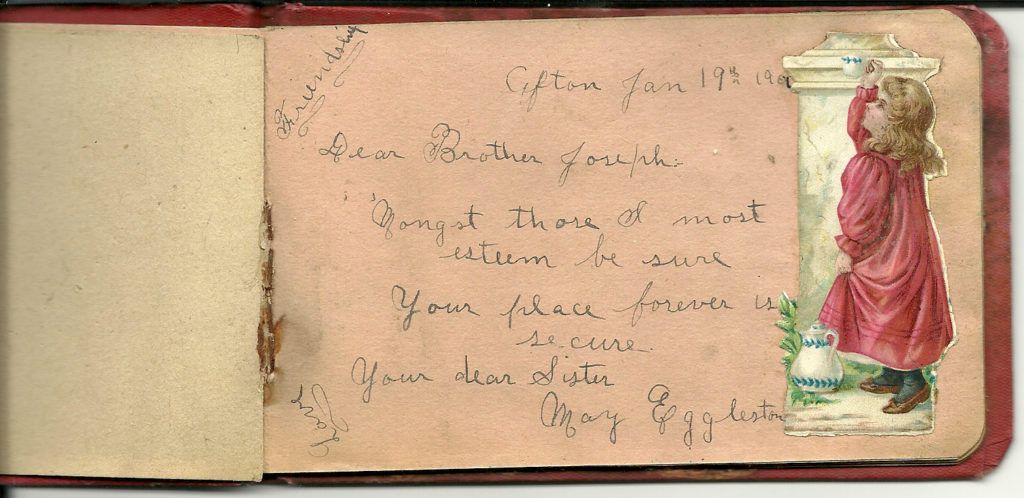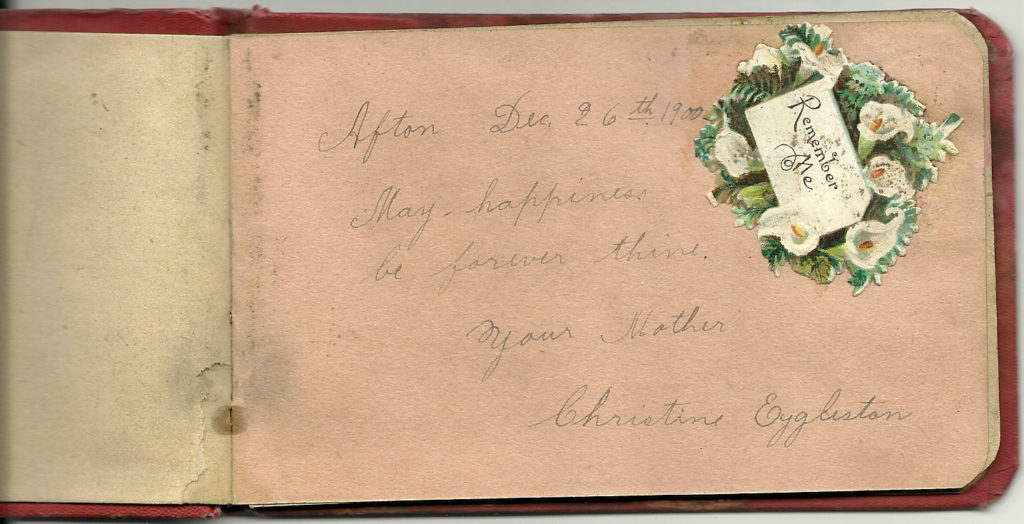Throughout her life, my Mother, Joan Eggleston, created a great deal of art work. She left us many beautiful paintings, but that is not all she did. She was a continual art student. I recall her taking many community education art classes, mostly at Ben Lomond High School where my Dad worked. She even taught some of those classes herself. Through the years, she at least tried most kinds of art, creating more with some than with others. Here are some of her lesser known artistic works.
Pottery and Ceramics
Many people are aware that my Dad bought a kiln and molds for porcelain figurines and other objects. They gave many of these for wedding and other gifts. Much earlier, however, Mom took community art classes and made pottery. I don’t know what has happened to all of the pots she made. When we cleaned out the house, I only saw a few things. I took one pot home because I remember the specific process involved. She was very excited about it. It is called Raku and involves taking the pot quickly out of the kiln and while still hot putting it into a bucket with something like wood chips (I don’t recall exactly what was in there, possibly water as well). The effect was different for every piece and not known until it was finished. Usually there was a metallic look with the glaze that she used.
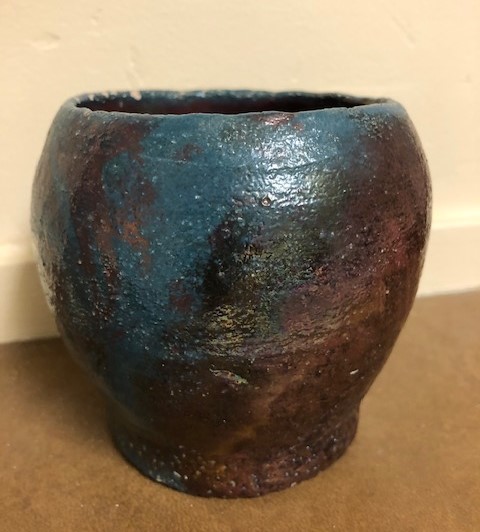
Mom used a variety of glazes and made different kinds of objects. At one time she made many small clay tiles that she was going to put together, but I don’t recall it ever being finished.
Dried Flowers
Mom was very skilled at arranging flowers. She made beautiful arrangements of fresh flowers, silk flowers and dried flowers. I don’t think she could stand to have an empty basket, pot or vase – she always put some kind of flowers in them. Her home had floral displays everywhere.
She learned to dry flowers using sand. Not any old sand. This required sand from the Great Salt Lake. Fortunately, the lake wasn’t too far away. I left a rather large pile of sand in the yard when the house was sold. I dumped several containers and then kept finding more cardboard boxes and plastic ice cream buckets full of sand. Mom had been gone for over 20 years when Dad sold the house, but there were still flowers in boxes of sand. She arranged these dried flowers in vases and baskets and encased them in frames and glass cases. Dried flowers last much longer than fresh ones, but still over time they can get looking pretty shabby, especially if displayed in baskets or vases. They break easily and get very dusty. Not many of those arrangements have survived, and I confess I tossed a few when we cleaned.
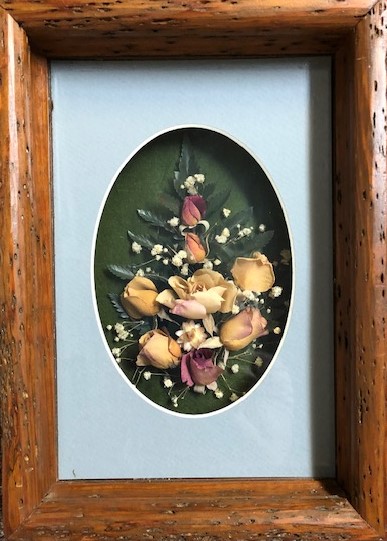
I remember making some of these framed dried flower pictures with Mom. I took this one home, partly because I really like the wood that the frame is made of. My Dad and Grandfather made these shadow box frames.
Painting on Wood
Tole Painting was very popular in years past. It is the kind of painting I did – I got kind of addicted for a while. Mom was much better at it than I was. She painted on many everyday items, and some more artistic ones. Her father worked in wood and carved many ducks. Like the empty baskets and pots that needed flowers to be complete, Mom painted ducks so they wouldn’t be naked.
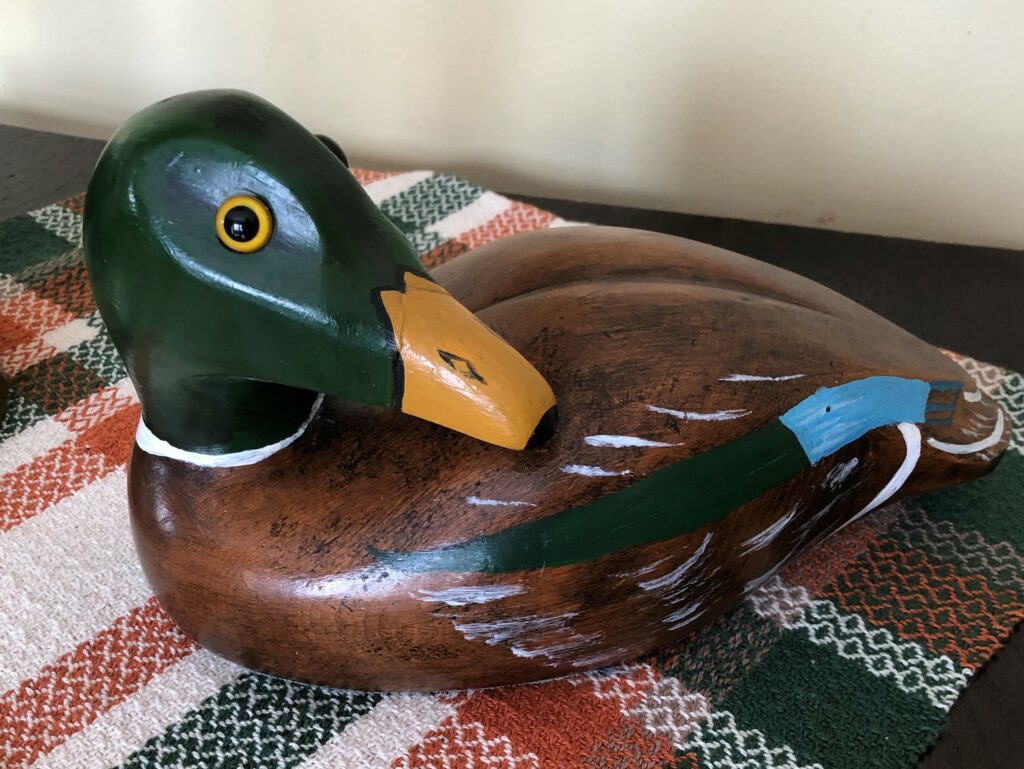
Jewelry
Mom made jewelry. She used a process using wax molds, which were filled with silver. Silver was her metal of choice and the silver sometimes came from coins that were melted down. She loved turquoise, but she also used other stones. I found rocks when we cleaned out the house – gemstones, actually. Some polished and ready to use. Others still rough. Mom really liked jewelry and often bought pieces when the traveled. She also gathered and bought stones in rock shops. In cleaning out the house, I found her jewelry making tools and brought them home. Though I did learn to make jewelry in art classes, I doubt I will be using them.
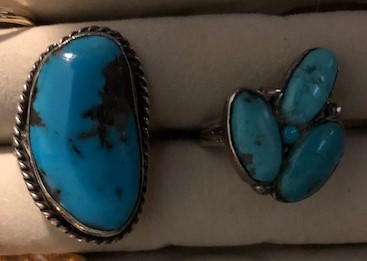
Cake Decorating
Mom was a skilled cake decorator. She made all kinds of cakes, including all of our wedding cakes. My wedding cake also made use of her floral decorating skills.
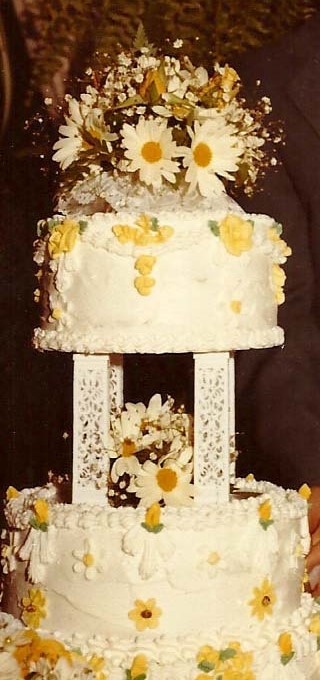
Porcelain Dolls
Her artistic skills were combined with her porcelain dolls – ceramic finishing, painting and sewing intricate clothing and accessories. She named all the dolls and designated certain ones for each of her granddaughters. Some granddaughters left their dolls at my house where the next generation has played with them.
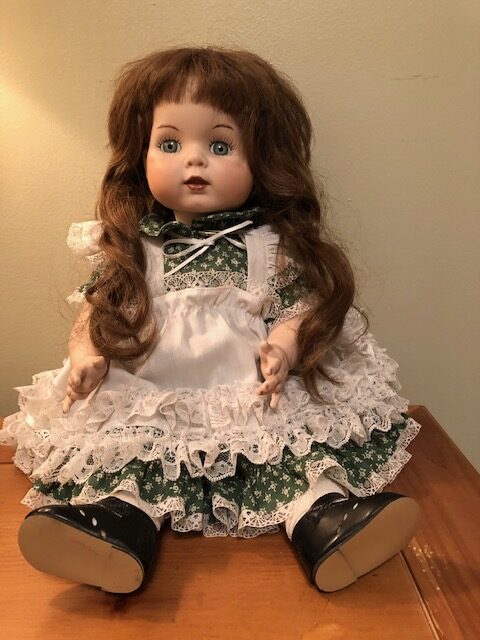
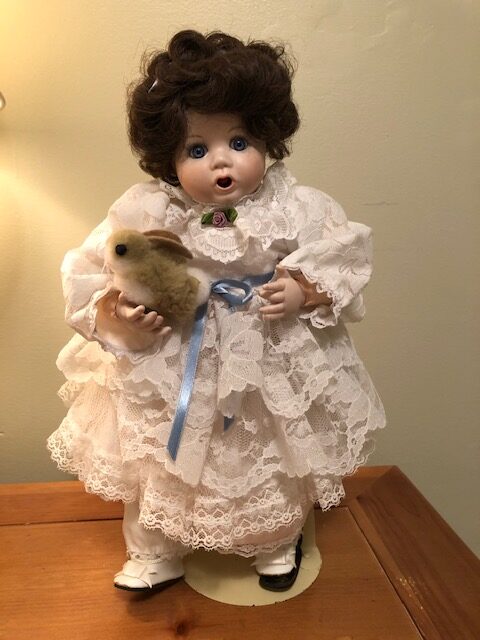
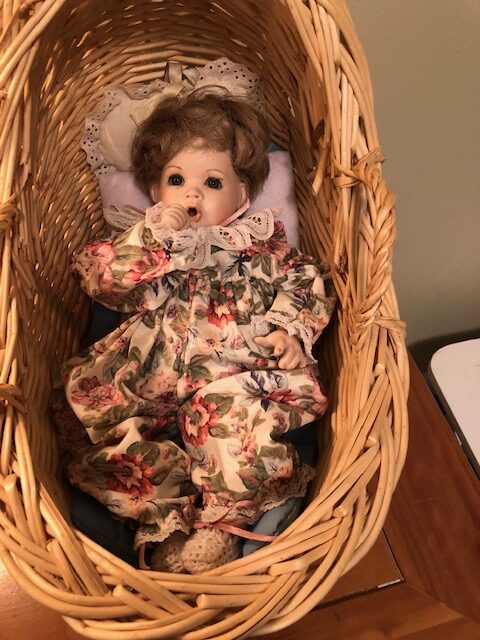
Other Artistic Expressions
I remember Mom making collages and other things when she took art classes. She did calligraphy, which in the old days meant hand lettering posters, cards and things. I found her calligraphy pen tips at the house, too. Mom was an expert seamstress and quilter. She made most of our clothes and also made drapery, pillows and all kinds decorative items. Her needle arts will have to be covered in another post.
Mom left a legacy of art to her children and grandchildren, as well as passing on degrees of her talent. (I got much less talent than others did). Some have carried on with art forms she used, while others have expressed their artistic talents in other media.
I probably have missed some types of Mom’s art as I have written about these. Feel free to share anything I may have missed in the comments. I can always edit the post.
